 ART
ART In Which These Are The 100 Greatest Painters In History
 Wednesday, January 29, 2014 at 11:45AM
Wednesday, January 29, 2014 at 11:45AM 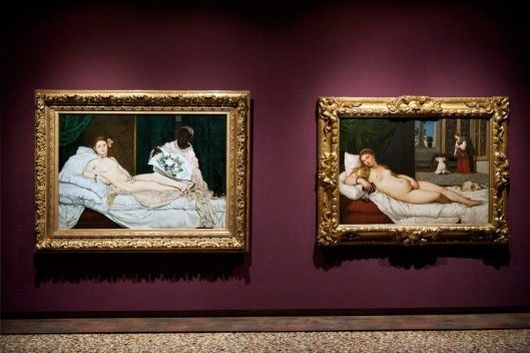
The Greatest Painters in Western History
By art alone we are able to get outside ourselves, to know what another sees of this universe which for him is not ours, the landscapes of which would remain as unknown to us as those of the moon. Thanks to art, instead of seeing one world, our own, we see it multiplied and as many original artists as there are, so many worlds are at our disposal, differing more widely from each other than those which roll round the infinite and which, whether their name be Rembrandt or Vermeer, send us their unique rays many centuries after the hearth from which they emanate is extinguished. (Proust)
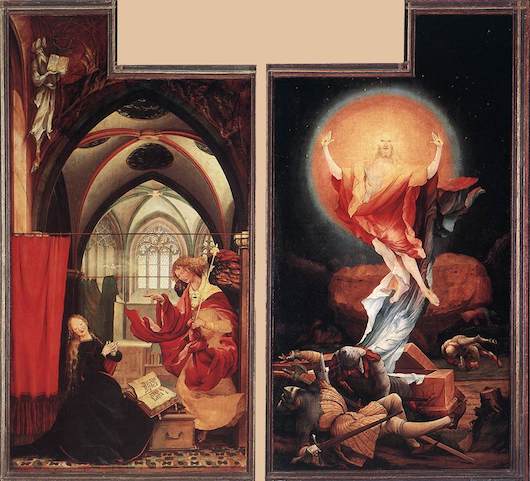 1515
1515
100. Matthias Grünewald
J K Huysmans wrote, "Here again he is nobody's pupil, and we have no alternative but to put him down in the history of painting as an exceptional artist, a barbarian of genius who bawls out coloured prayers in an original dialect, an outlandish tongue."
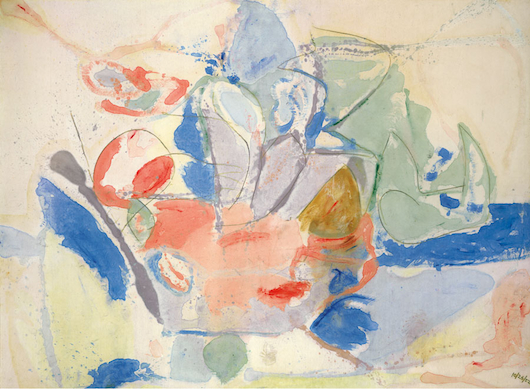 1952
1952
99. Helen Frankenthaler
"Every so often every artist feels, 'I'll never paint again. The muse has gone out the window,'" she said in a 1989 interview. "In 1985, I hardly painted at all for three months, and it was agonizing. I looked at reproductions. I stared at Matisse. I stared at the Old Masters. I stared at the Quattrocento. And I thought to myself - Don't push it! If you try too hard to get at something, you almost push it away."
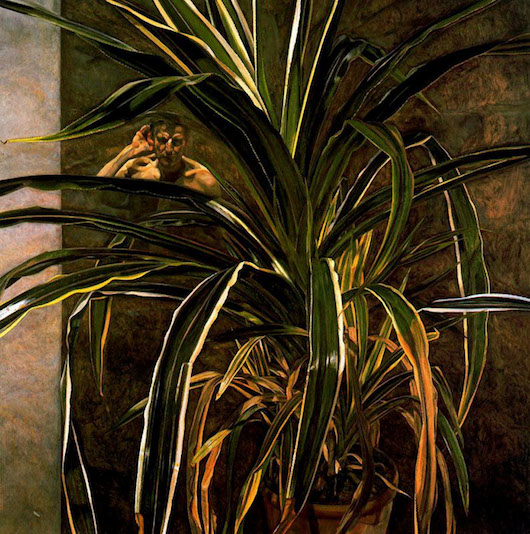 1968
1968
98. Lucian Freud
"What do I ask of a painting? I ask it to astonish, disturb, seduce, convince."
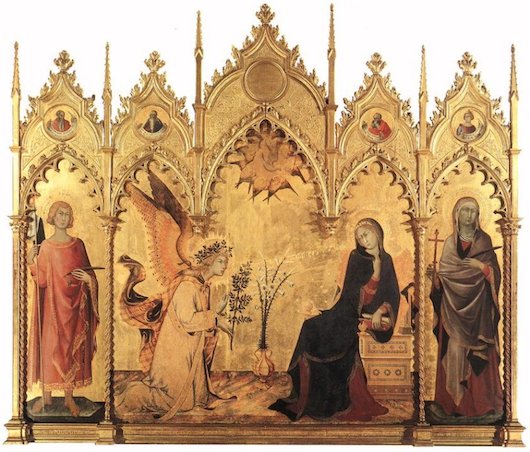 1333
1333
97. Simone Martini
Jane Tylus wrote, regarding the text in Simone Martini's Maestà: "That the Virgin should 'speak' in the vernacular in this fresco contemporary with Dante's Commedia and in rhymed terzine that call to mind the poetic structure of Dante's poem, already circulating in Tuscany, would not have been particularly surprising. It suggests a consciousness, on Martini's part but also on that of his civic commissioners, of the city's definition of itself as vernacular. Siena was one of the first medieval communes that consciously moved away from Latin as its 'official' language."
Giovanni Pozzi wrote, on Simone Martini's Annunciation, "The painter, by highlighting [the angel's salutations] and placing them before us without any support, expresses in its quintessence the reason why Christian iconography has followed with such tenacity this disconcerting model of words written within a figurative context. This is the scene in which the Word takes on flesh, and so renders visible the image of the Father. It is the event in which word and image are consubstantial."
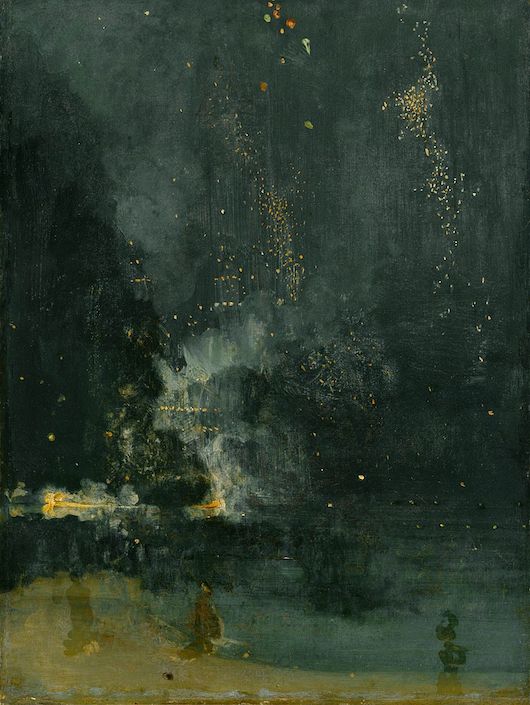 1875
1875
96. James Abbott McNeill Whistler
In 1877, John Ruskin wrote, in response to Whistler's Nocturne in Black and Gold, "I have seen, and heard, much of Cockney impudence before now; but never expected to hear a coxcomb ask two hundred guineas for flinging a pot of paint in the public's face." Whistler sued Ruskin for libel. An excerpt from Whistler v. Ruskin, 1878:
Holker: "Did it take you much time to paint the Nocturne in Black and Gold? How soon did you knock it off?"
Whistler: "Oh, I 'knock one off' possibly in a couple of days – one day to do the work and another to finish it..."
Holker: "The labour of two days is that for which you ask two hundred guineas?"
Whistler: "No, I ask it for the knowledge I have gained in the work of a lifetime."
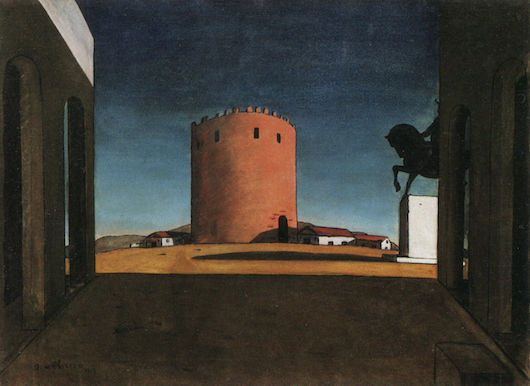 1913
1913
95. Giorgio de Chirico
"Life rushed by," he wrote during his only trip to America. "For me it was not the ideal life, but in fact I worked and when I work I am always more or less calm and happy. Some magazines, including Vogue and Harper's Bazaar, asked me for illustrations and I did some, but I must confess that the atmosphere of these magazines, just like other atmospheres where the snobbery of American elegance flourished, were totally unpleasing to me, for I have observed in them such stupidity, such ignorance, such ill-will, such cynicism and such disguised vulgarity that in comparison the lowest illiterate Neapolitan beggar, thief and pimp seems a genius, a gentleman and a saint."
 1573
1573
94. Paolo Veronese
The monumental Last Supper Veronese painted in 1573 provoked suspicion and accusations of heresy by the Roman Inquisition. Instead of making any alterations to the painting after being questioned, Veronese changed the painting’s presumed subject, renaming it The Feast in the House of Levi.
Transcript of Veronese being questioned at the Tribunal of the Inquisition on July 18th 1573:
Q. Did some person order you to paint Germans, buffoons, and other similar figures in this picture?
A. No, but I was commissioned to adorn it as I thought proper; now it is very large and can contain many figures.
Q. Should not the ornaments which you were accustomed to paint in pictures be suitable and in direct relation to the subject, or are they left to your fancy, quite without discretion or reason?
A. I paint my pictures with all the considerations which are natural to my intelligence, and according as my intelligence understands them.
Q. Does it seem suitable to you, in the Last Supper of our Lord, to represent buffoons, drunken Germans, dwarfs, and other such absurdities?
A. Certainly not.
Q. Then why have you done it?
A. I did it on the supposition that those people were outside the room in which the Supper was taking place.
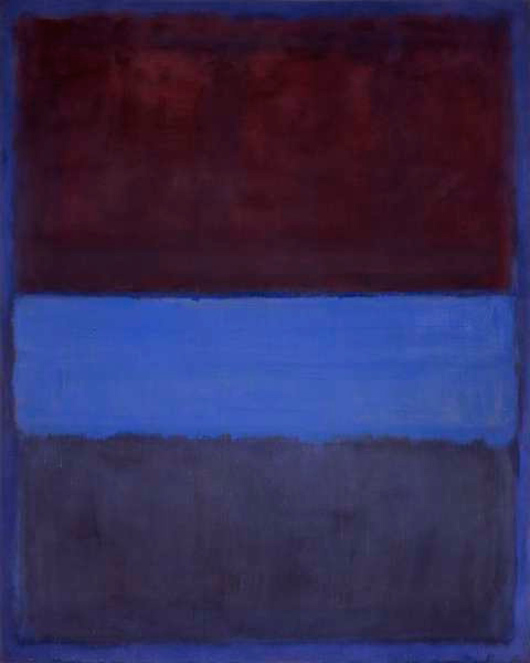 1953
1953
93. Mark Rothko
"I will say without reservations that from my point of view there can be no abstractions. Any shape or area that has not the pulsating concreteness of real flesh and bones, its vulnerability to pleasure or pain is nothing at all. Any picture that does not provide the environment in which the breath of life can be drawn does not interest me."
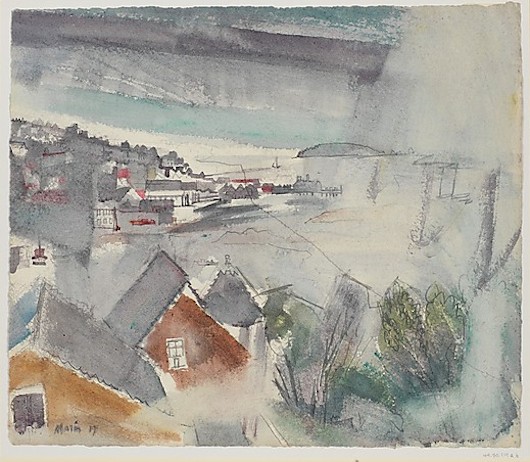 1919
1919
92. John Marin
"Whatever reservations one may have, and one can have many, the amazing thing in these paintings is their originality of vision," Fairfield Porter wrote. "There is a new form for a new experience. This experience was something that Marin was always expressing, in his talk, in his gestures, even in the way he walked — the critic Paul Rosenfeld told of seeing him once without himself being seen: Marin was entering the subway, wearing a raincoat, going around a corner, tipped to one side, and Rosenfeld thought, 'He looks just like his watercolors!'"
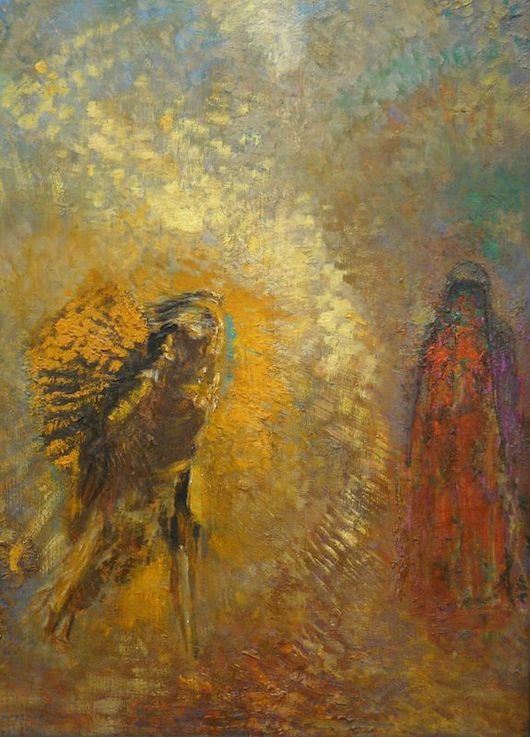 1905
1905
91. Odilon Redon
"My originality consists in bringing to life…improbable beings and making them live according to the laws of probability, by putting—as far as possible—the logic of the Visible at the service of the Invisible."
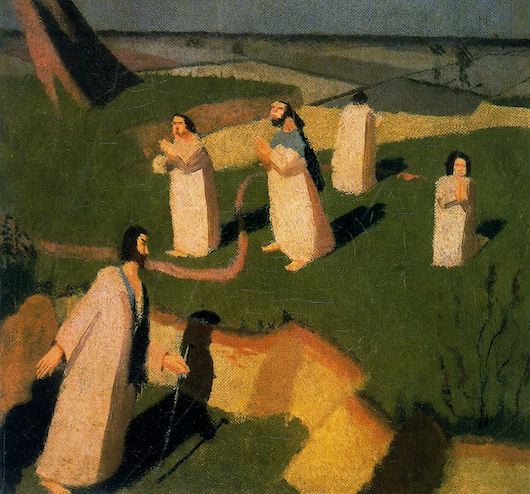 1911
1911
90. Stanley Spencer
He wrote, "When I lived in Cookham I was disturbed by a feeling of everything being meaningless. But quite suddenly I became aware that everything was full of special meaning and this made everything holy. I observed this sacred quality in most unexpected quarters."
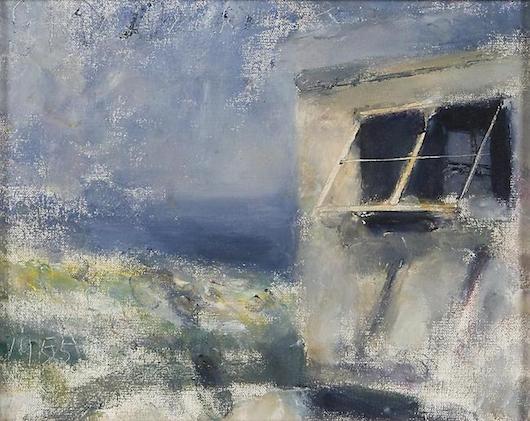 1955
1955
89. Edwin Dickinson
He said, "It's a great thing in the separation between earth and sky. However close or far apart the color value relationships between a roof, a house, and the sky beyond it were, [Charles] Hawthorne's urging of us was that no time be lost in exhausting our first best stating of the color value relationship between the sky and the earth. The roof that rose into the sky, and the roof over which a stone could not be thrown because it would hump into the sky was a looked-down-upon affair."
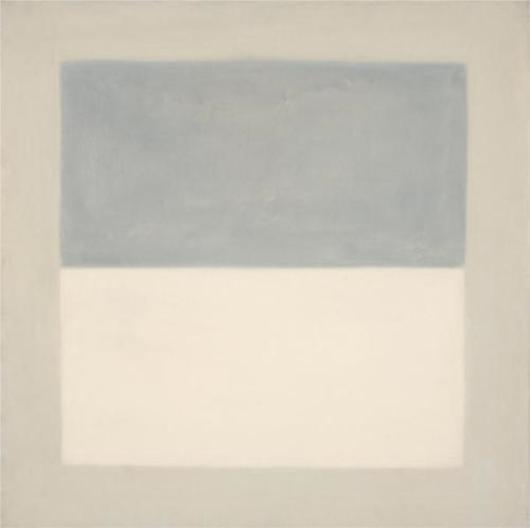 1960
1960
88. Agnes Martin
She wrote, "I would like my work to be recognized as being in the classical tradition (Coptic, Egyptian, Greek, Chinese), as representing the Ideal in the mind. Classical art cannot possibly be eclectic. One must see the ideal in one's own mind. It is like a memory-an awareness-of perfection.
When I think of art I think of beauty. Beauty is the mystery of life. It is not in the eye it is in the mind. In our minds there is awareness of perfection.
What I say is that we’re capable of a transcendent response, and I think it makes us happy. And I do think beauty produces a transcendent response."
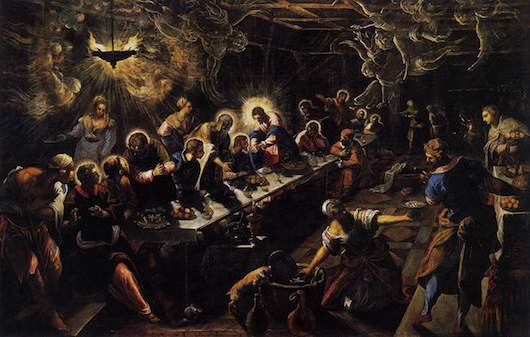 1592-4
1592-4
87. Tintoretto
Annibale Caracci, a younger contemporary of Tintoretto, wrote, "I have sometimes seen Tintoretto as equal to Titian, and at other times as inferior to Tintoretto."
Sartre: "Tintoretto’s painting is first of all the passionate relationship of a man with a city." And, "Left to himself, he would have covered every wall in the city with his paintings. He would have covered the ceilings, people would have walked across his most beautiful images; his brush would have spared neither the facades of the palaces, nor the gondolas, nor perhaps, the gondoliers.” "Tintoretto did not choose that yellow rift in the sky above Golgotha to signify anguish or to provoke it. It is anguish and yellow sky at the same time. Not sky of anguish or anguished sky; it is an anguish become thing, an anguish which has turned into yellow rift of sky, and which thereby is submerged and impasted by the proper qualities of things, by their impermeability, their extension, their blind permanence, their externality, and that infinity of relations which they maintain with other things."
Goethe: "A Paradise by Tintoretto, or rather the coronation of Mary as Queen of Heaven in the presence of all the patriarchs, prophets, saints, angels, etc., a nonsensical idea executed with the greatest genius. There is such ease of brushwork, spirit, and wealth of expression here that to admire and enjoy the piece properly one would have to own it, since the work may be said to be infinite, and the least of the angels' heads have character."
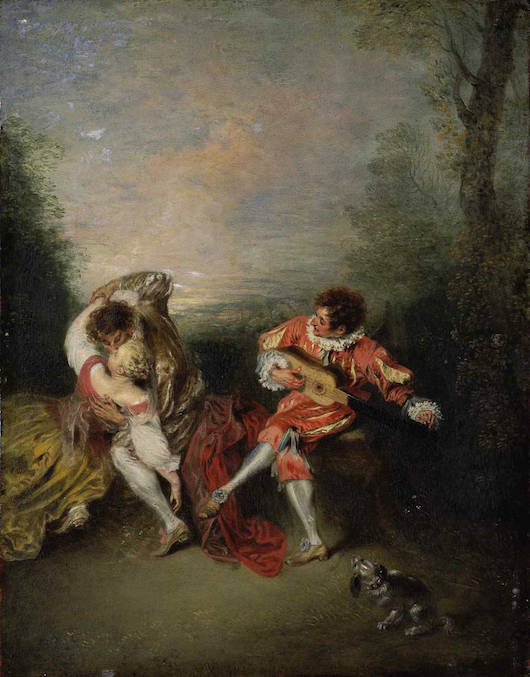 1718
1718
86. Antoine Watteau
Watteau's La Surprise was presumed lost for two centuries until, in 2007, an insurance valuation led to its discovery in an English private collection.
"Watteau's artistic legacy pervades French art up to the emergence of Neoclassicism," wrote Perrin Stein. "The sweetness of his palette, an homage to Rubens and the colorism of sixteenth-century Venetian painting recast in delicate pastels to suit the scale and aesthetic of Rococo décor, was widely followed, as was his preference for erotic genre subjects adapted from seventeenth-century Dutch and Flemish sources."
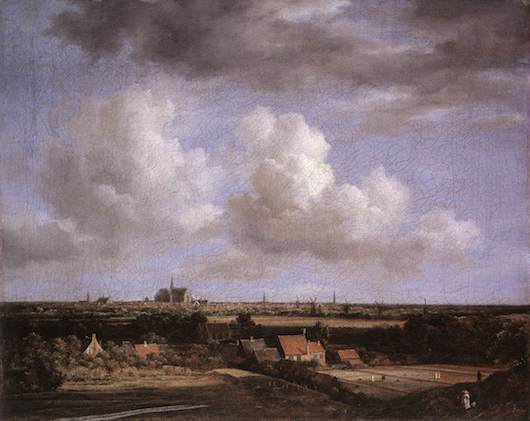 1670-75
1670-75
85. Jacob Isaacksz van Ruisdael
Goethe: "[Ruisdael], in the purity of his feeling and in the clarity of his thought, shows himself to be a poet, achieves a perfect symbolism, and at once delights, teaches, refreshes and revitalizes us by the wholeness of his inner and outward feelings."
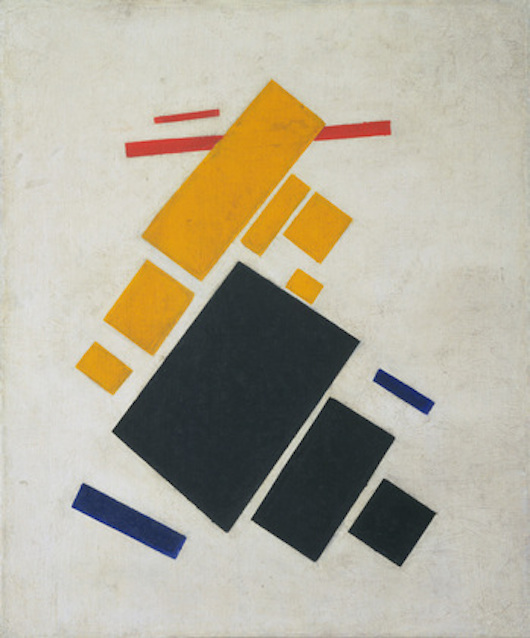 1915
1915
84. Kazimir Malevich
"In 1913, trying desperately to liberate art from the ballast of the representational world, I sought refuge in the form of the square."
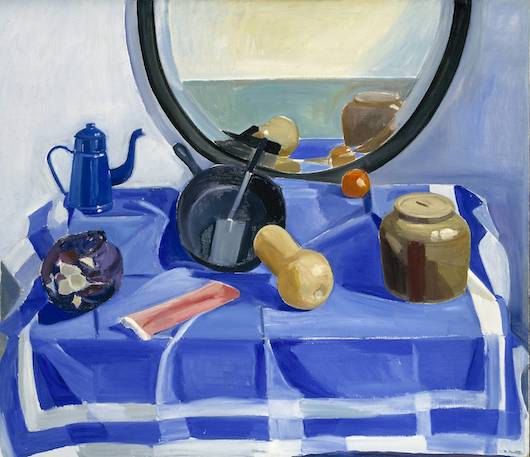 1979
1979
83. Louisa Matthíasdóttir
John Ashbery wrote of her work that, "One returns to these pictures, as year after year they paradoxically both expand and simplify the world they have chosen to explore, for their strange flavor, both mellow and astringent, which no other painter gives us."
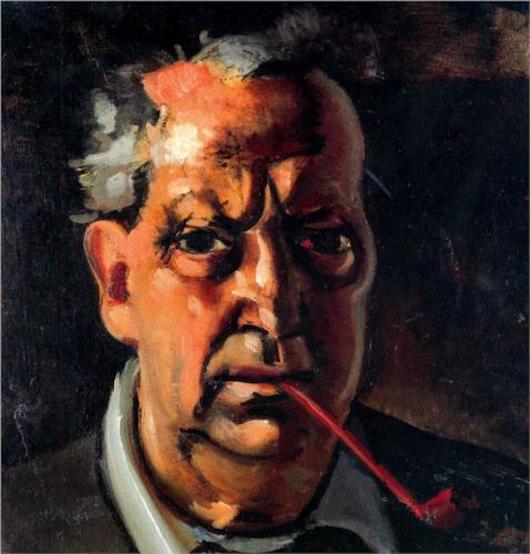 1953
1953
82. André Derain
In "The Case for Derain as an Immortal," Leland Bell wrote, "Derain was suspended in time, standing alone, letting it flow around him and meditating on the mystery of reality."
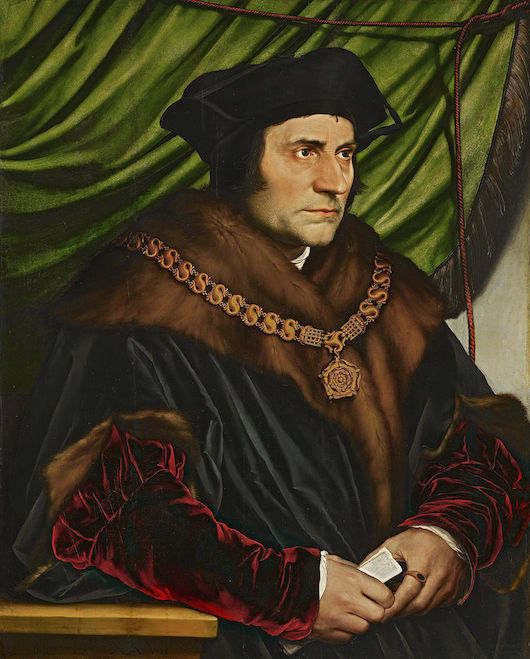 1527
1527
81. Hans Holbein the Younger
Following advice from Erasmus, Holbein moved to England in 1526. He eventually became a salaried painter for Henry VIII. Thomas More, who helped Holbein find commissions upon his arrival, wrote: "Your painter, my dearest Erasmus, is a wonderful artist."
John Rowlands: "[The] striving for perfection is very evident in his portrait drawings, where he searches with his brush for just the right line for the sitter's profile. The critical faculty in making this choice and his perception of its potency in communicating decisively the sitter's character is a true measure of Holbein's supreme greatness as a portrait painter."
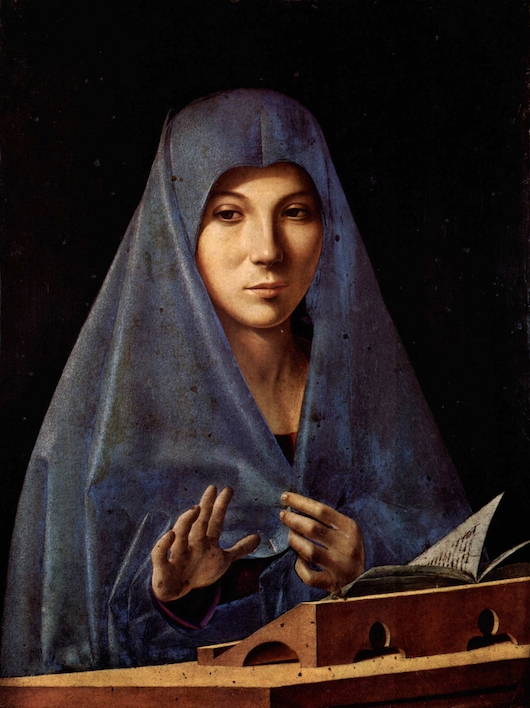 1476
1476
80. Antonello da Messina
Vasari credited Antonello da Messina with introducing oil paint to Italy after his studies with van Eyck. "When men heard of the new secret that he had brought from Flanders to that city, he was ever loved and cherised by the magnificent noblemen of Venice throughout the whole course of his life."
 1826
1826
79. John Constable
He wrote, "Still I should paint my own places best; painting is with me but another word for feeling, and I associate 'my careless boyhood' with all that lies on the banks of the Stour; those scenes made me a painter, and I am grateful; that is, I had often thought of pictures of them before ever I touched a pencil."
"There is nothing ugly; I never saw an ugly thing in my life: for let the form of an object be what it may, — light, shade, and perspective will always make it beautiful."
"And however one's mind may be elevated, and kept us to what is excellent, by the works of the Great Masters — still Nature is the fountain's head, the source from whence all originally must spring — and should an artist continue his practice without referring to nature he must soon form a manner, & be reduced to the same deplorable situation as the French painter mentioned by Sir J. Reynolds, who told him that he had long ceased to look at nature for she only put him out."
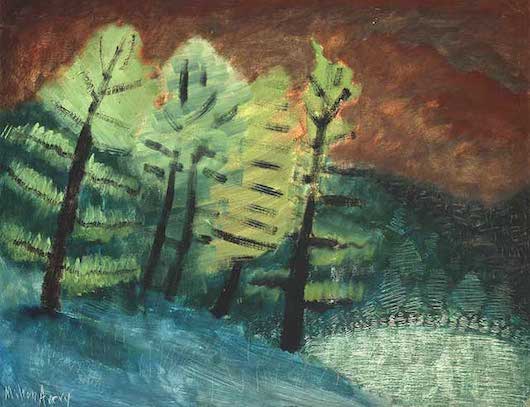 1936
1936
78. Milton Avery
His wife explained his work in this fashion: "He had a very definite vision which was always with him. And I think each of his paintings grew out of the painting before. I mean, he was always attempting something which had nothing to do with the subject. The thing that he was painting. His problem was always a painter's problem, which had nothing to do with actually what he was painting. He really thought in terms of shapes and spaces and colors and things like that. And the subject was just something that he used to start a move on this other journey that he was painting."
1471-74
77. Andrea Mantegna
Mantegna worked as a salaried painter for the Gonzaga court in Mantua, where he spent almost ten years covering the Ducal Palace's Camera degli Sposi in frescoes. Joseph Manca wrote, "The Gonzaga court in Mantegna's time was a highly civilized place, where the arts, literature, music, and dance were fostered by the ruling family. Although they clung to medieval ideals of art and literature a generation or more later than the upper classes in mercantile cities such as Florence and Venice, the rulers of Italian city-states finally took up with enthusiasm the classical revival. Mantegna was part of this great cultural shift, and he brought the stylistic revolution in painting to the Gonzaga court."
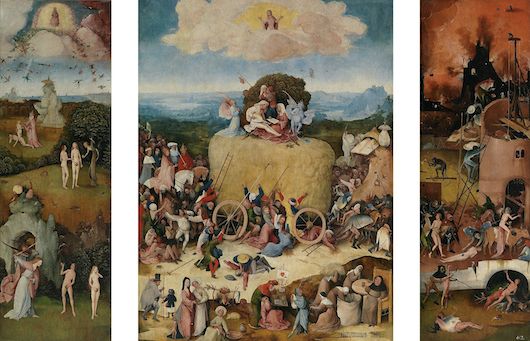 1516
1516
76. Hieronymus Bosch
"Looking at a fragment of The Millennium the other day," wrote Henry Miller, "I pointed out to our neighbor, Jack Morgenrath, formerly of Williamsburg, Brooklyn) how hallucinatingly real were the oranges that diapred the trees. I asked him why it was that these oranges, so preternaturally real in appearance, possess something more than would oranges painted by Cezanne (better known for his apples) or even by Van Gogh. To Jack it was simple. (Everything is quite simple to Jack, by the way. It's part of his charm.) Said Jack: 'It's because of the ambiance.'
"Bosch is one of the very few painters - he was indeed more than a painter! - who acquired a magic vision. He saw through the phenomenal world, rendered it transparent, and thus revealed its pristine aspect. Seeing the world through his eyes it appears to us once again as a world of indestructible order, beauty, harmony, which it is our privilege to accept as a paradise or convert into a purgatory. The enchanting, and sometimes terrifying, thing is that the world can be so many things to so many different souls."
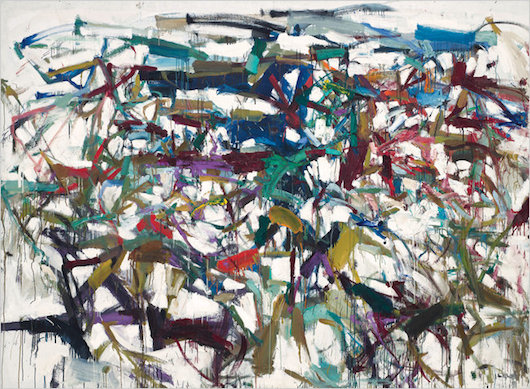 1957
1957
75. Joan Mitchell
"I think I've been mad at something or someone ever since you left," she wrote on February 24, 1947. "I don't know - something violent is eating me and painting has been like walking up an escalator when it's going down - it's so easy to hate. You told me to be happy but B.R. isn't around and so there isn't any me to be happy with - the best is a kind of neutral condition that likes sun in the morning and there's no sun anyway."
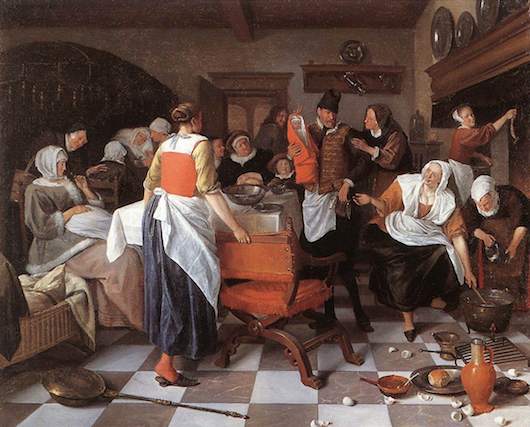 1664
166474. Jan Steen
Jan Steen was the son of a brewer, and ran his own tavern in the 1670s. Art historians, including S J Gudlaugsson, have studied his paintings' references to archetypal characters from contemporary Italian and Dutch theater.
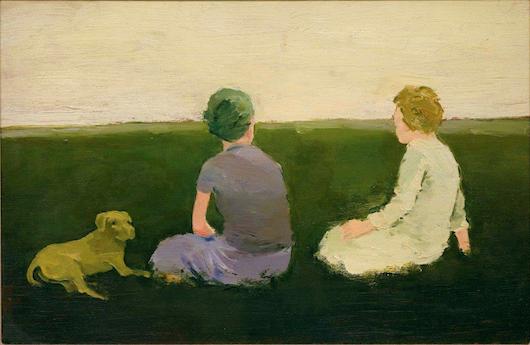 1964
1964
73. Albert York
"The modern world just passes me by. I don’t notice it. I missed the train."
"I think we live in a paradise. This is the Garden of Eden, really it is. It might be the only paradise we ever know, and it’s just so beautiful, with the trees and everything here, and you feel you want to paint it. Put it into a design. That’s all I can say."
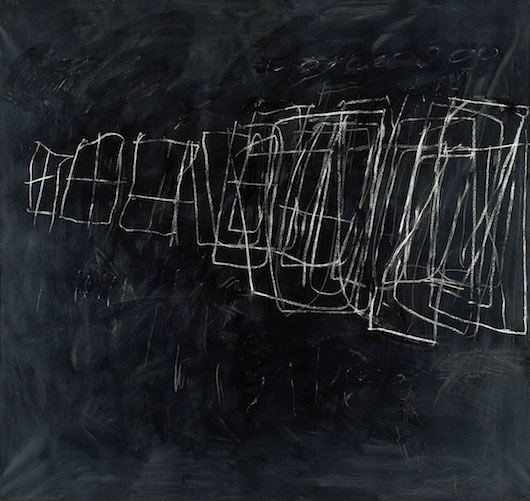 1966
1966
72. Cy Twombly
John Berger wrote, "I know of no other visual Western artist who has created an oeuvre that visualizes with living colors the silent space that exists between and around words. Cy Twombly is the painterly master of verbal silence."
 1651
1651
71. Nicolas Poussin
Andre Gide wrote of Poussin that, "As often happens, Poussin ran the risk of being hindered by intelligence. The miracle is that Poussin was painter enough, great painter enough, so that the container, under the excessive weight of its contents, did not give way; so that his triumphant conception knew how to subdue the material even while glorifying it."
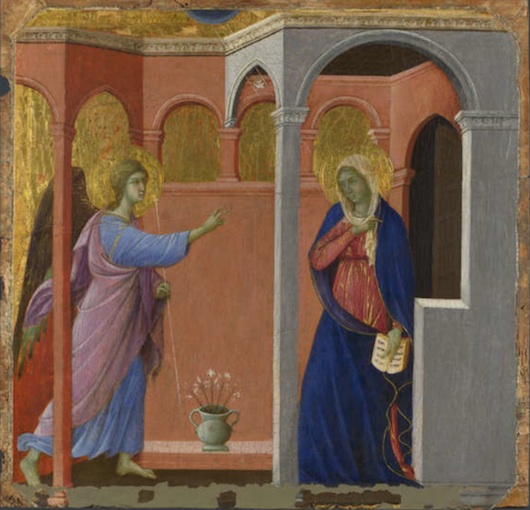 1307/8-11
1307/8-11
70. Duccio di Buoninsegna
Keith Christiansen wrote, "Duccio studied the recently completed fresco cycle of the life of Saint Francis by Giotto and a large équippe of assistants...What impressed Duccio were the illusionistic devices Giotto introduced to frame the individual scenes as well as his ability to create a cogent, pictorial space inhabited by figures possessing weight and density. It was an art that embraced the complex and varied world of human experience, rather than one based on codified types, as had been the case with medieval and Byzantine painting. Duccio responded by exploring in his own art this new world of sentiment and emotional response, but with a lyricism and sensitivity to color that became the basis of Sienese painting."
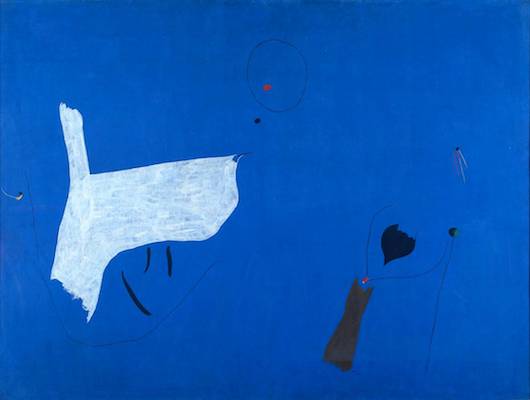 1927
1927
69. Joan Miró
"I feel the need of attaining the maximum intensity with the minimum of means. It is this which has led me to give my painting a character of even greater bareness."
"What I am looking for... is an immobile movement, something which would be the equivalent of what is called the eloquence of silence, or what St. John of the Cross, I think it was, described with the term 'mute music.'"
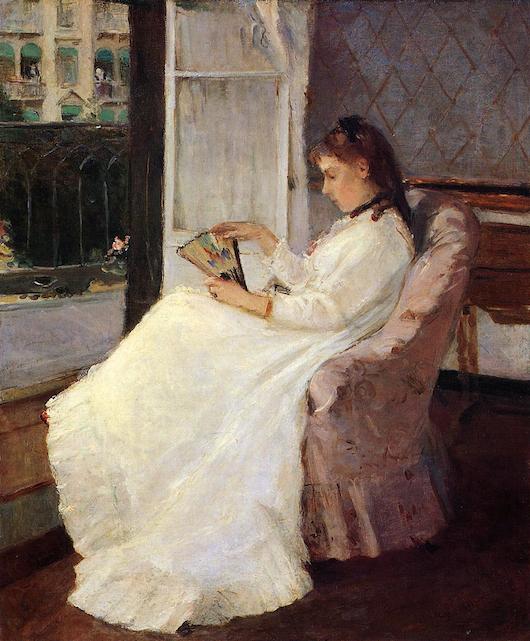 1869
1869
68. Berthe Morisot
Before she married Manet's brother, she wrote to her friend that "I'm reading Darwin; it's hardly subject matter for a woman, even less for an unmarried woman; what I do see clearly is that my situation is unbearable from every point of view." At her wedding, on the register under occupation, she wrote, "No profession." Then to her brother, she wrote, "I've found an honest and excellent young man who, I believe, sincerely loves me. I've entered into the positive side of life after having lived for a long time by chimeras."
 1521
1521
67. Rosso Fiorentino
In his 1967 book about Mannerism, John Shearman wrote: "Perhaps the most individual artist of this group was Rosso; his Mannerism has the intensity of the convert’s, for it represents a marked change of direction after the vivid, direct and brutally expressive works he painted around 1520."
Legend has it (Vasari again) that Rosso had a pet monkey known for stealing grapes from the garden of a neighboring friar.
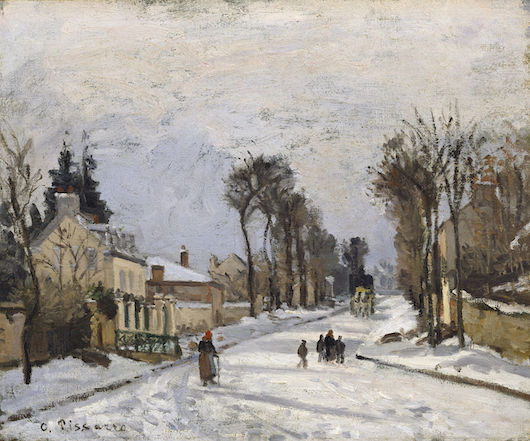 1869
1869
66. Camille Pissarro
"Precise drawing is dry and hampers the impression of the whole, it destroys all sensations. Do not define too closely the outlines of things; it is the brush stroke of the right value and color which should produce the drawing. . . . The eye should not be fixed on one point, but should take in everything, while observing the reflections which the colors produce on their surroundings. Work at the same time upon sky, water, branches, ground, keeping everything going on an equal basis and unceasingly rework until you have got it. . . . Don’t proceed according to rules and principles, but paint what you observe and feel."
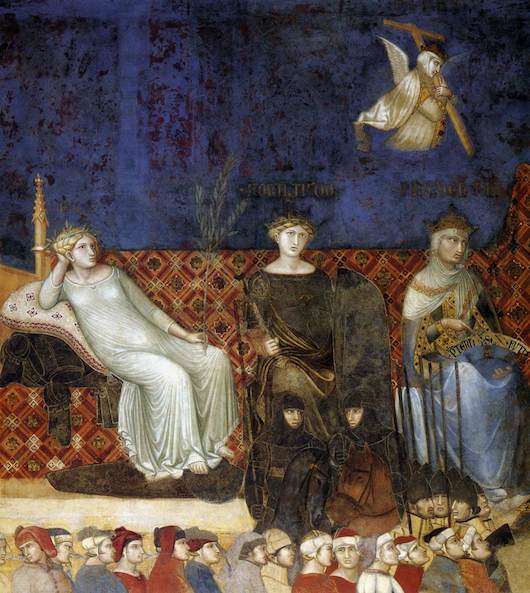 c. 1338-40
c. 1338-40
65. Ambrogio Lorenzetti
Writer and painter Timothy Hyman wrote: "The 46-foot frescoed wall of The Well-Governed City - painted in Siena by Ambrogio Lorenzetti (1288-1348) - is a visionary microcosm whose imaginative scope has never been surpassed. But his preparations must have involved a great deal of architectural drawing, far more than most of our contemporary artists would stoop to. Ambrogio was heir to thirty years of Sienese experiment in the relation of architecture to figure: by his master, Duccio; his rival, Simone Martini; his brother, Pietro. Echoes of this great panorama would reverberate a hundred years later in Sassetta and Giovanni di Paolo and even in Brueghel, as well as in many late twentieth-century painters such as Kitaj and Bhupen Khakhar."
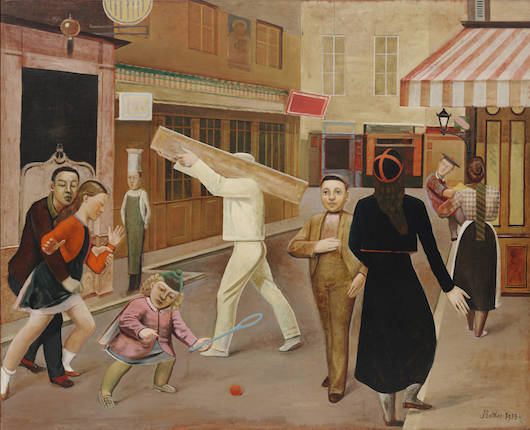 1933
1933
64. Balthus (Balthasar Klossowski)
As he told the Tate in 1968: “No biographical details. Begin: Balthus is a painter of whom nothing is known. Now let us look at the pictures. Regards, B”
In a letter to Rilke in 1922, the publisher Kurt Wolff wrote that "the boy's ability to translate his feelings into graphic expression is astouding and almost frightening."
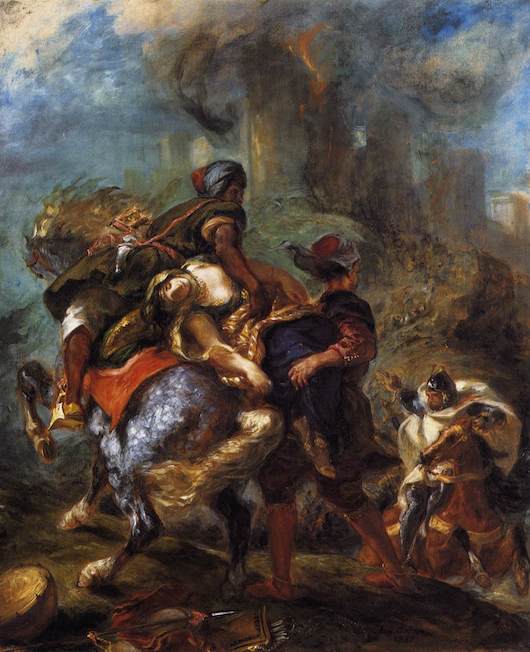 1846
1846
63. Eugène Delacroix
April 11 1824
It is just that with so vagabond and impressionable a mind, one idea drives out another more quickly than the wind swirls in the air and turns the sail in the opposite direction. It happens that I have a number of subjects. Very well, what to do with them? They will remain in storage coldly waiting their turn, and never will the inspiration of the moment animate them with the breath of Prometheus: they will have to be taken from the drawer when there is need to make a picture! This is the death of genius.
May 14 1824
Thou who knowest there is always something new, show it to them in what they have failed to recognize. Make them believe that they have never heard tell of the nightingale or the spectacle of the vast sea, and of everything their gross senses reach out to feel only when others have troubled to experience them first. Don’t be embarrassed by language. If you cultivate your soul, it will find a chance to show itself. It will create a language quite as worthy as the hemstitches of this man or the prose of that. …They have not said the hundredth part of what there is to say…and nature has stored in the great imaginations more that is new to say about her creations than she has created things…
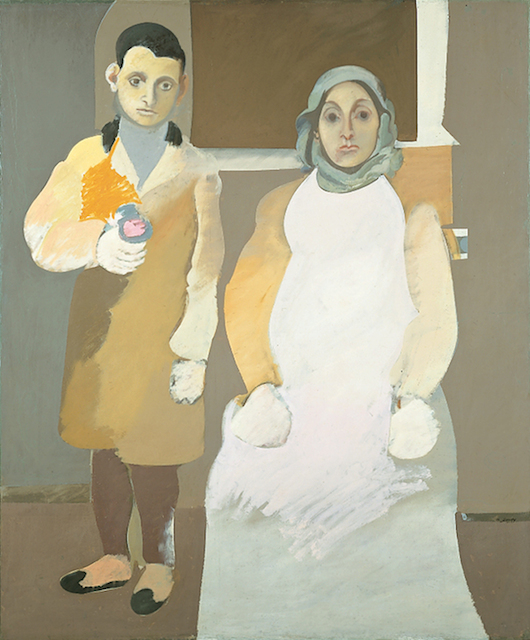 1926-36
1926-36
62. Arshile Gorky
"The stuff of thought is the seed of the artist. Dreams form the bristles of the artist's brush. As the eye functions as the brain's sentry, I communicate my innermost perceptions through the art, my worldview."
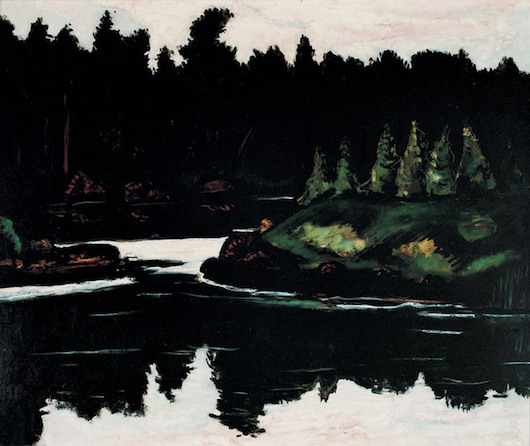 1938
1938
61. Marsden Hartley
"I hate gossip and I hate intimacy," he wrote to William Carlos Williams, "You do not allow for the quality of imagination which you will admit is without moral - and for which you have a genuine gift. Just let me tell you Bill - I am never intimate with anyone. I never know anyone so much that I feel I am entirely at home. You baffle me as much as anyone I have ever come in contact with - barring none - and it is because you veil your reality with charm which is the only excuse for talking to or being with anyone." He went on, "You shall never be able to be specific with me dear Bill - because in my life no one is that real. I can tolerate no one more than for their capacity to "create" themselves in my presence."
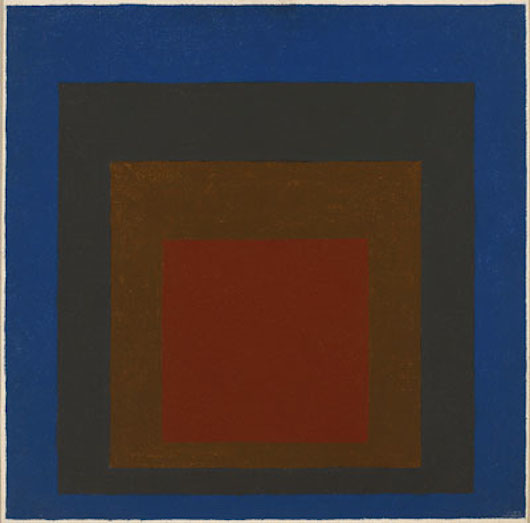 1957
1957
60. Josef Albers
He wrote, "Art is concerned with something that cannot be explained by words or literal description...art is revelation instead of information.... creativeness is the lucky readiness to feel, to sense, to see an opportunity--to discover and to invent...not to miss the chance of finding and presenting a new idea, a new seeing."
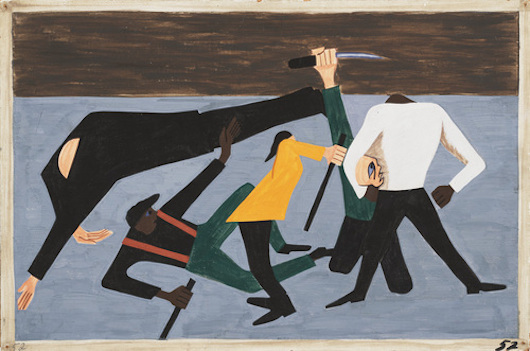 1940-41
1940-41
59. Jacob Lawrence
He told Carroll Greene, in his longest extant interview, that "we live in a world - and I imagine this has always existed - of trade, of commercialism, of - well, just this as opposed to the creative world which deals in another way - is creative in another sense. And I think this is what we must realize when we talk about this. Now as this pertains to the artists, he has to separate these two things. He cannot let his creative activities or his creative involvement become involved or let this other thing which we call Madison Avenue influence in any way his creative involvement, you see. And I feel that the only way the artist can do this. The only artists I've seen accomplish this come with a sense of maturity. He must get this straight because once he begins to mix these things up he ceases to become either - he cannot take advantage of either one. He cannot take advantage of his own creative talents whatever they may be, neither can he fully take advantage of what Madison Avenue has to offer. I'll put it that way. And it's been my experience he can become a pretty dissatisfied and in some instances a pretty bitter individual because he's neither one nor the other."
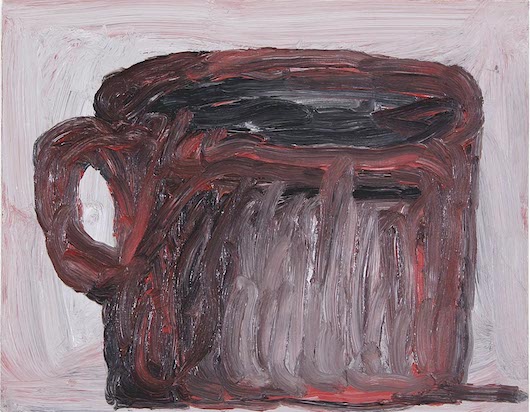 c. 1969-73
c. 1969-73
58. Philip Guston
"I want to paint a world as if it's never been seen before."
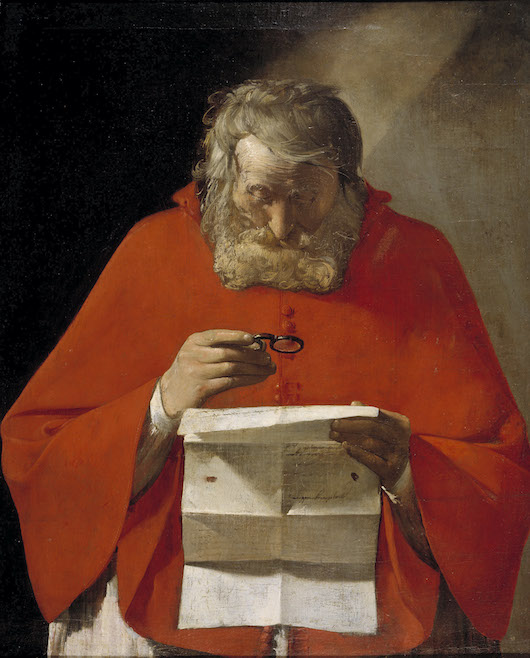 1629
1629
57. Georges de La Tour
"The Woman and the Flea as well as Saint Irene with the Wounded Saint Sebastian, prefigure Balthus...it is the rectangular combination of blandness with something shocking, and the spell-like stillness. As Descartes proved existence by his own existence, validated in introspection, so these bourgeois artists [La Tour and Le Nain] proved art by their own practice, validated less by comparison to Italian precedent than within the paintings themselves," wrote Fairfield Porter.
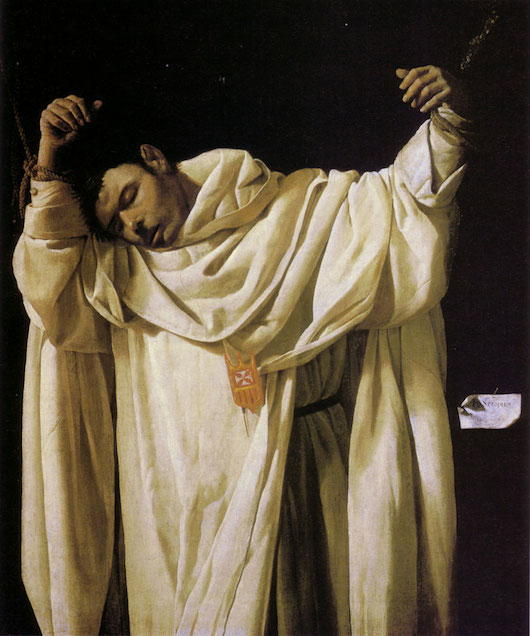 1628
1628
56. Francisco de Zurbarán
Alfonso E. Pérez Sánchez writes, "While Velázquez, upon coming into contact with the royal collections, promptly transformed his early tenebrist style, Zurbarán remained faithful throughout his life to the principles of a solemn, sculptural monumentality enhanced by shafts of violent light, and to an empathy, in the medieval tradition, for the details of everyday life."
 1489-1490
1489-1490
55. Sandro Botticelli
Pater wrote that, "in pictures like this of Botticelli's you have a record of the first impression made by it on minds turned back towards it, in almost painful aspiration, from a world in which it had been ignored so long; and in the passion, the energy, the industry of realisation, with which Botticelli carries out his intention, is the exact measure of the legimitate influence over the human mind of the imaginative system of which this is the central myth. The light is indeed cold - mere sunless dawn."
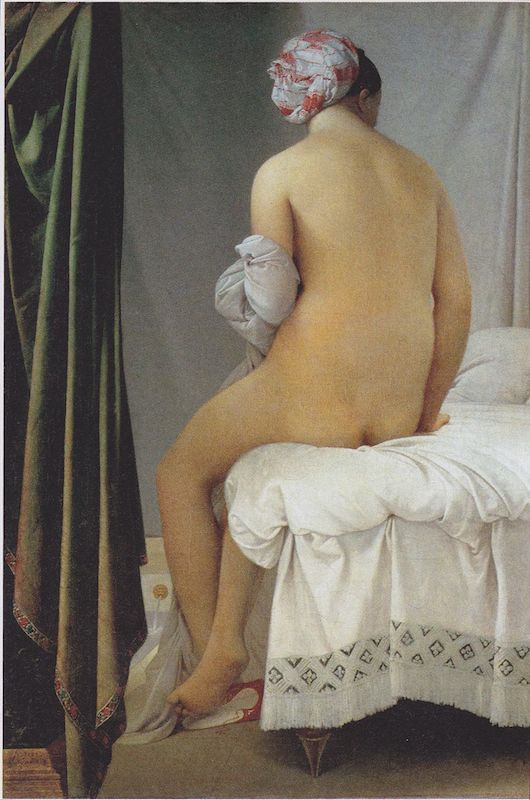 1808
1808
54. Jean-Auguste-Dominique Ingres
He called Delacroix a "drunken broom."
“Suppose that I do succeed,” he wrote, “I will only be appreciated by a tiny number that grows smaller every day.”
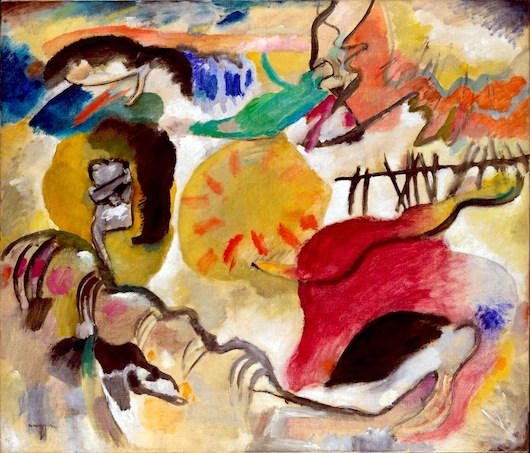 1912
1912
53. Wassily Kandinsky
He wrote, "Imagine a building divided into many rooms. The building may be large or small. Every wall of every room is covered with pictures of various sizes; perhaps they number many thousands...All this is carefully printed in a book--name of artist--name of picture. People with these books in their hands go from wall to wall, turning over pages, reading the names. Then they go away, neither richer nor poorer than when they came, and are absorbed at once in their business, which has nothing to do with art. Why did they come? In each picture is a whole lifetime imprisoned, a whole lifetime of fears, doubts, hopes, and joys."
And, "Every work of art is the child of its age and, in many cases, the mother of our emotions. It follows that each period of culture produces an art of its own which can never be repeated. Efforts to revive the art-principles of the past will at best produce an art that is still-born. It is impossible for us to live and feel, as did the ancient Greeks."
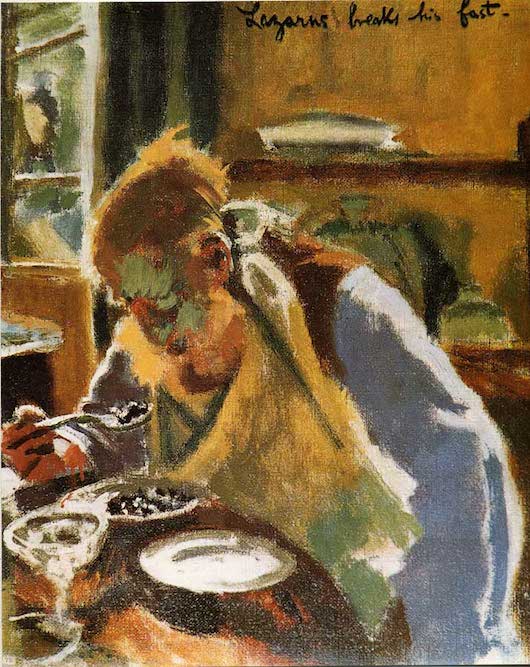 1927
1927
52. Walter Richard Sickert
A critic himself, he wrote, "painters, of all men, are singularly unfitted by habit and inclination for the tiresome work of checking and exposing every lie of ignorant and hurried detraction, and this is one reason why I think it high time that at least one London daily should make a point of gibbeting the perpetrators with the regularity of clockwork."
The next month he added, "Of the result of work achieved it is the function of the critic to speak, and as freely as he may, but I would respectfully submit that the fact that the painter sees in any scene the elements of pictorial beauty, is the obvious and sufficient explanation of his motive for painting it. Judged by his failure or success in expressing these, his work must be content to fall or stand."
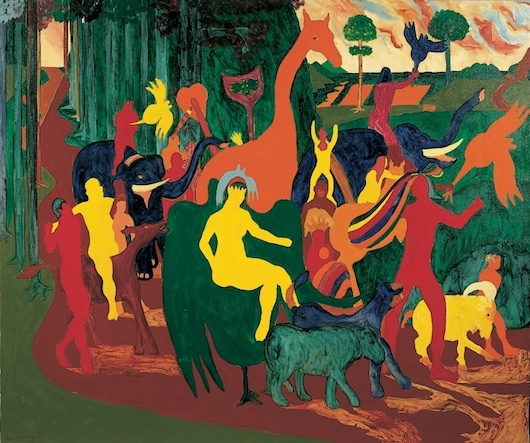 1964
1964
51. Bob Thompson
"I think painting should be like the theatre... The painters in the Middle Ages, and the Renaissance were employed to educate the people. I am not specifically trying to do that...but, in a certain way, I am trying to show what's happening, what's going on...in my own private way."
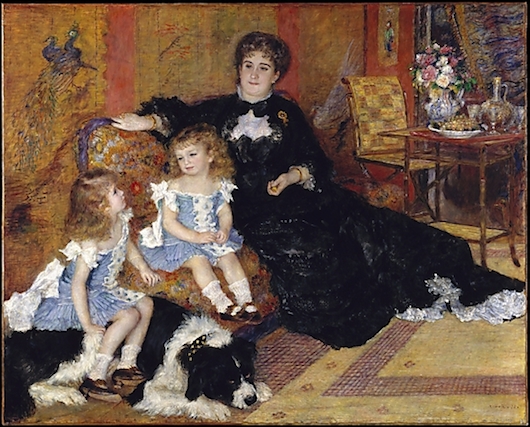 1878
1878
50. Pierre-August Renoir
He wrote, "At the start I see my subject in a sort of haze. I know perfectly well that what I shall see in it later is there all the time, but it only becomes apparent after a while."
"The queen of all colors is black."
"A fat lot of good it would do if I told you that Titian's courtesans make you want to caress them. Some day you'll see the Titians for yourself, and if they have no effect on you, then you don't understand the first thing about painting. And I wouldn't be able to help you."
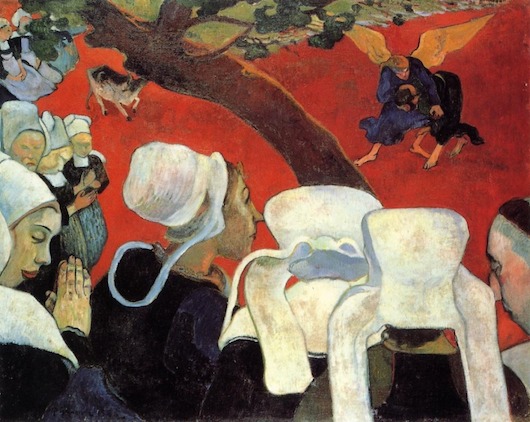 1888
1888
49. Paul Gauguin
He said, "Art is either plagiarism or revolution."
The French critic Octave Mirbeau wrote, "His art is strangely cerebral and passionate, uneven still, but poignant and superb in its very unevenness."
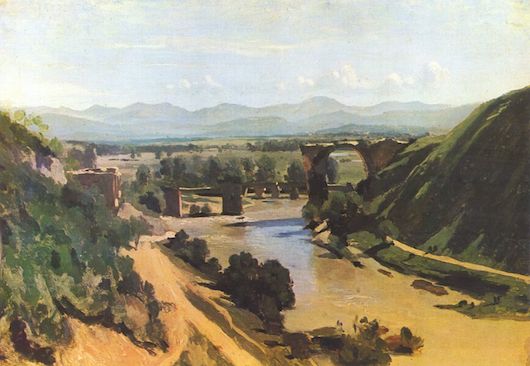 1826
1826
48. Jean-Baptiste-Camille Corot
"We must never forget to envelop reality in the atmosphere it first had when it burst upon our view. Whatever the sight, whatever the object, the artist must submit to the first impression."
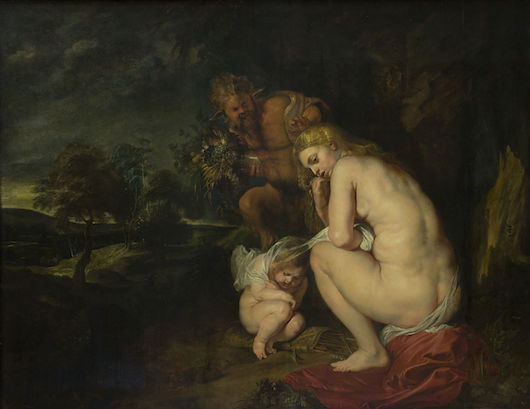 1614
1614
47. Peter Paul Rubens
"Indeed the facility with which he invented, the richness of his composition, the luxuriant harmony and brilliancy of his colouring, so dazzle the eye, that whilst his works continue before us, we cannot help thinking that all his deficiencies are fully supplied," wrote Sir Joshua Reynolds.
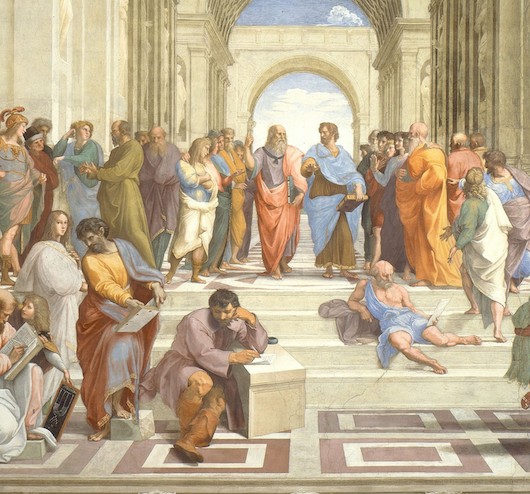 1509
1509
46. Raphael (Raffaello Sanzio da Urbino)
Sir Joshua Reynolds wrote, "The daily food and nourishment of the mind of an Artist is found in the great works of his predecessors. There is no other way for him to become great himself...Raffaelle, as appears from what has been said, had carefully studied the works of Masaccio; and indeed there was no other, if we except Michael Angelo, (whom he likewise imitated,) so worthy of his attention."
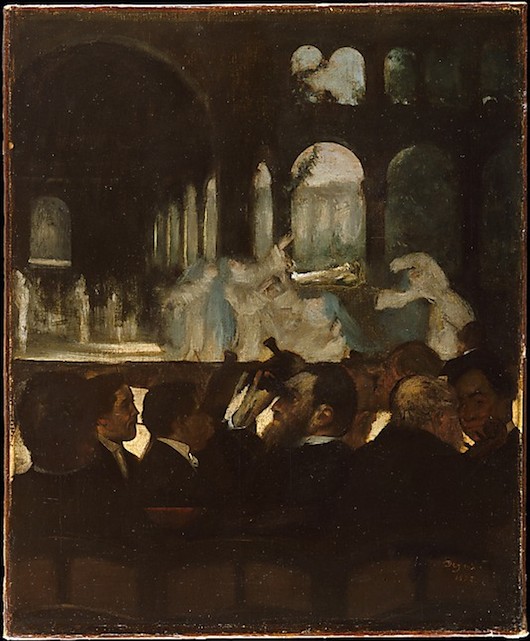 1871
1871
45. Edgar Degas
"What I do is the result of reflection and study of the great masters. Of inspiration, spontaneity, temperament I know nothing."
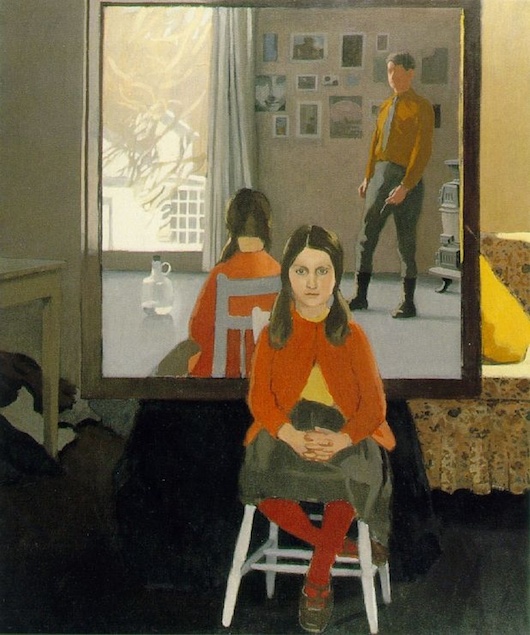 1966
1966
44. Fairfield Porter
He wrote, "How can you know what art is if it is inexplicable? The answer is that the most certain knowledge is untranslatable. People do not trust this kind because they have been misled into thinking that you only know translations. Education teaches you to prefer indirection. But the best art has the best connection with the state of mind in which the commonplace becomes original. This is the way one recognizes wholeness.
"I know nothing more certainly than my own sensation, and I cannot be sure of the quality of yours. Yet communication is there already. People do not ask what something means because they do not know, but out of fear of their unconscious knowledge; they ask in order to appease their education and to lift the pressure of a separate and immediate reality. They ask what something means so as not to have to attend to it."
1884
43. Georges Seurat
Seurat began La Grande Jatte in 1884 and first showed it in 1886, when he was 26. He made many preparatory studies for the painting, including roughly 28 drawings and 31 paintings.
Félix Fénéon wrote one of the only sympathetic reviews of La Grande Jatte in 1886: "It is four o’clock on Sunday afternoon in the dog-days. On the river the swift barks dart to and fro. On the island itself, a Sunday population has come together at random, and from a delight in the fresh air, among the trees, Seurat has treated his forty or so figures in summary and hieratic style, setting them up frontally or with their backs to us or in profile, seated at right-angles, stretched out horizontally, or bolt upright: like a Puvis de Chavannes gone modern."
Seurat wrote, "Art is Harmony. Harmony is the analogy of the contrary and of similar elements of tone, of color and of line, considered according to their dominance and under the influence of light, in gay, calm or sad combinations."
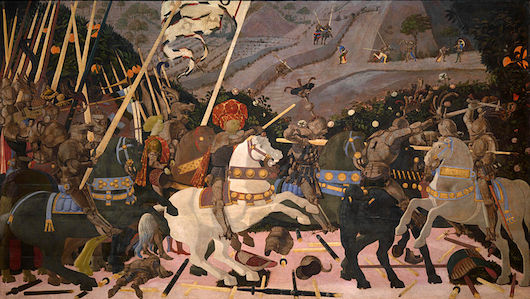 1438-40
1438-40
42. Paolo Uccello
Donatello, as quoted by Vasari, said, "Ah Paolo, this perspective of yours makes you neglect what we know for what we don't know. These things are no use except for marquetry - that's the kind of work where you need shavings with spirals and circles and squares and things like that."
Uccello wrote, "This knowledge I pursue is the finest pleasure I have ever known. I could no sooner give it up than I could the very air that I breathe."
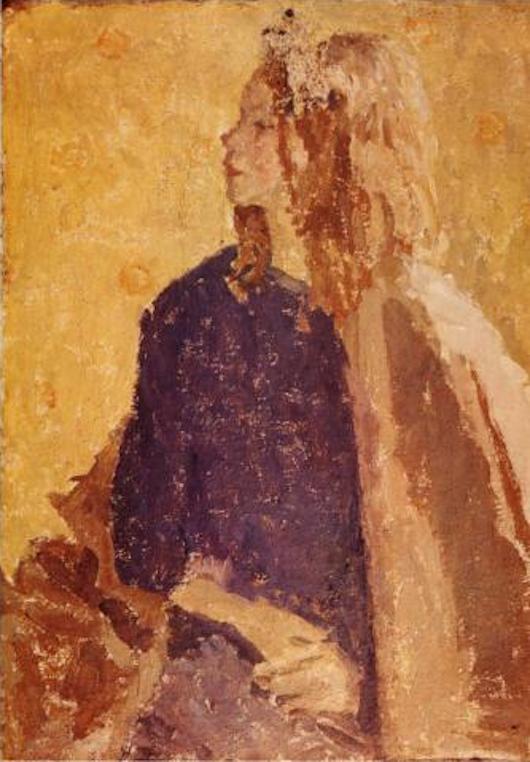 nd
nd
41. Gwen John
She said that "I should like to go and live somewhere where I met nobody I know till I am so strong that people and things could not effect me beyond reason. As to whether I have anything worth expressing, that is apart from the question. I may never have anything to express, except this desire for a more interior life."
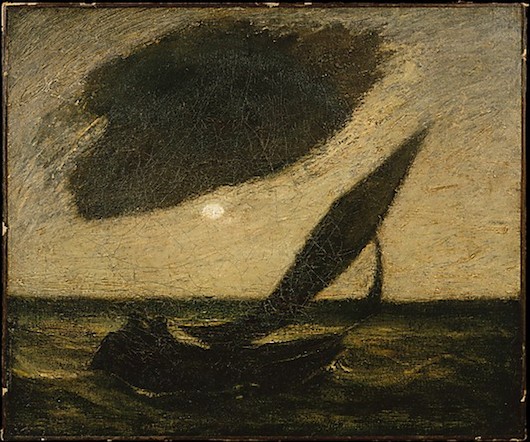 1900
1900
40. Albert Pinkham Ryder
"Have you ever seen an inch worm crawl up a leaf or twig, and then clinging to the very end, revolve in the air, feeling for something to reach something? That's like me. I am trying to find something out there beyond the place on which I have a footing," he wrote.
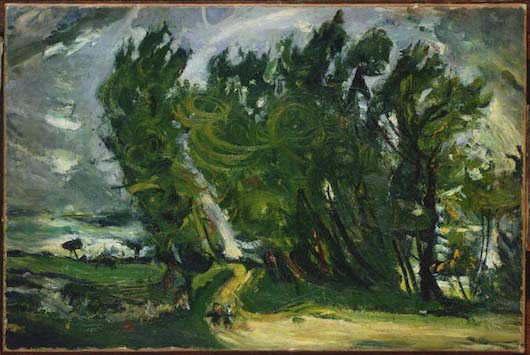 1939
1939
39. Chaïm Soutine
Philadelphia collector Albert Barnes said, "The main reason I bought so many of the paintings was that they were a surprise, if not a shock, and I wanted to find out how he got that way."
Soutine wrote, in a letter to a friend, "As you know, catastrophe is everywhere...Everything that happens leaves me unhappy...In order to forget the nightmare, I paint, I draw and I read."
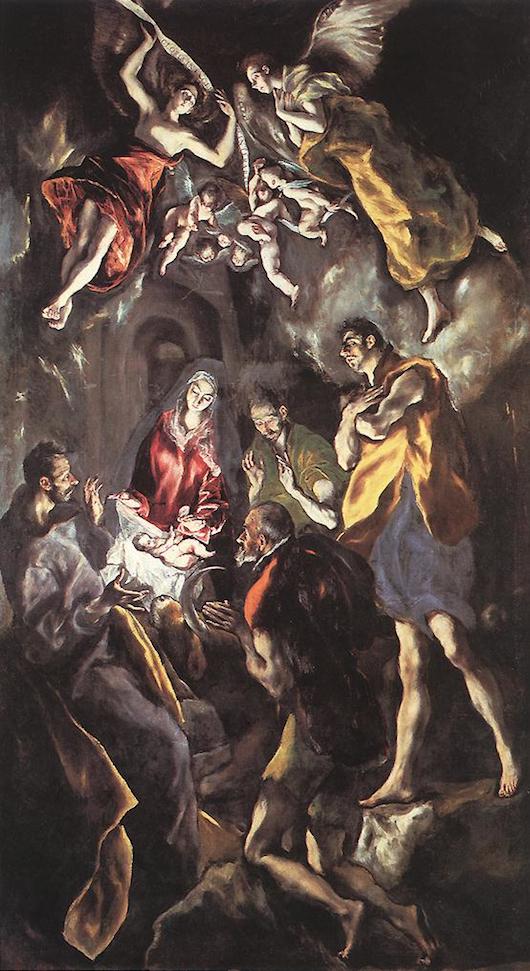 1512-14
1512-14
38. El Greco (Doménikos Theotokópoulos)
"I paint because the spirits whisper madly inside my head."
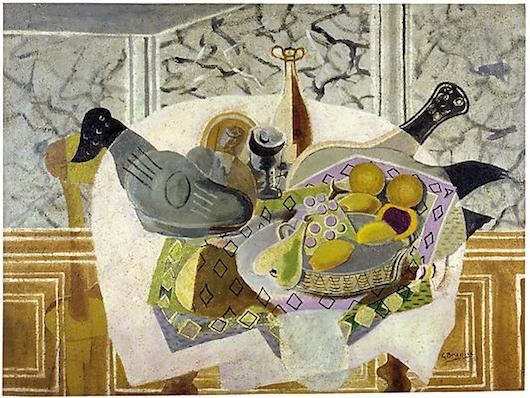 1936
1936
37. Georges Braque
Braque wrote, "Scientific perspective forces the objects in a picture to disappear away from the beholder instead of bringing them within his reach as painting should."
"I have been mainly preoccupied by space and movement."
"In the still life, you have tactile, I might almost say a manual space, while the space of a landscape is a visual space. In tactile space you measure the distance separating you from the object, whereas in visual space you measure the distance separating things from each other."
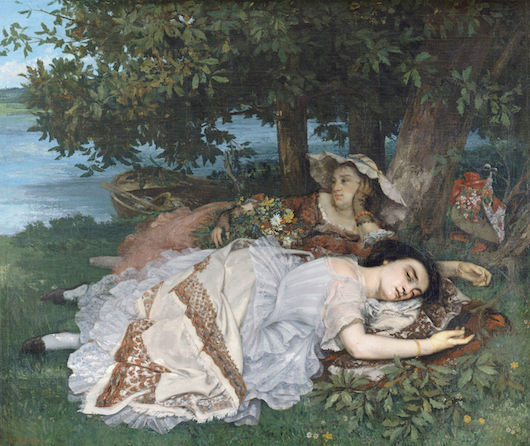 1856
1856
36. Gustave Courbet
A critic said about Courbet during his lifetime: "No one could drag art into the gutter with greater technical virtuosity."
Courbet said, "I am fifty years old and I have always lived in freedom; let me end my life free; when I am dead let this be said of me: 'He belonged to no school, to no church, to no institution, to no academy, least of all to any regime except the regime of liberty.'"
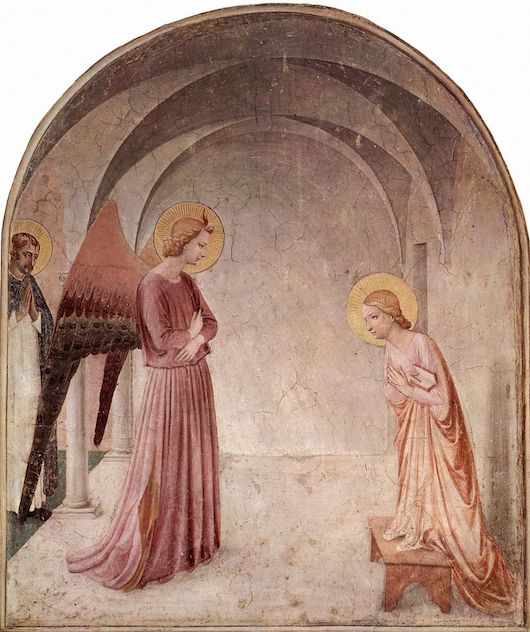 c. 1437-1446
c. 1437-1446
35. Fra Angelico (born Guido di Pietro)
In 1480, Cristoforo Landino wrote, "Fra Giovanni Angelico et vezoso et divoto et ornato molto con grandissima facilità." (Fra Angelico was blithe, devout, very ornate, and endowed with the greatest ease.) Michael Baxandall explains, “This word [vezzoso] is untranslatable. John Florio, in the first Italian-English dictionary (1598 and 1611), tried hard to find synonyms: ‘Vezosso, wanton, mignard, full of wantonnesse, quaint, blithe, buckesome, gamesome, flattring, nice, coy, squeamish, peart, pleasant, full of affection.' This is fair warning of its elusiveness. A vezzo was a caress and, by extension, a delight; vezzoso was delightful in a caressing way.”
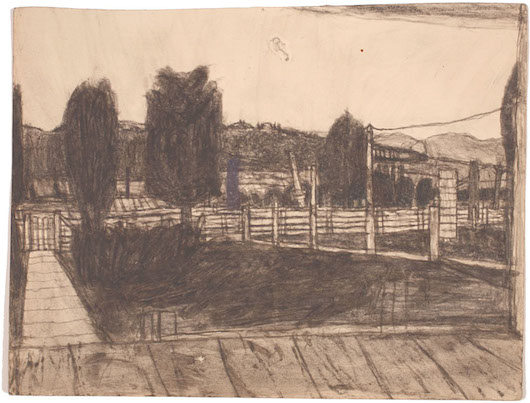 nd
nd
34. James Castle
James Castle grew up in Garden Valley, Idaho, where his father ran the local post office. In his early childhood, he began making drawings with found materials from his immediate surroundings, including soot and papers salvaged from the post office. He continued drawing throughout his life.
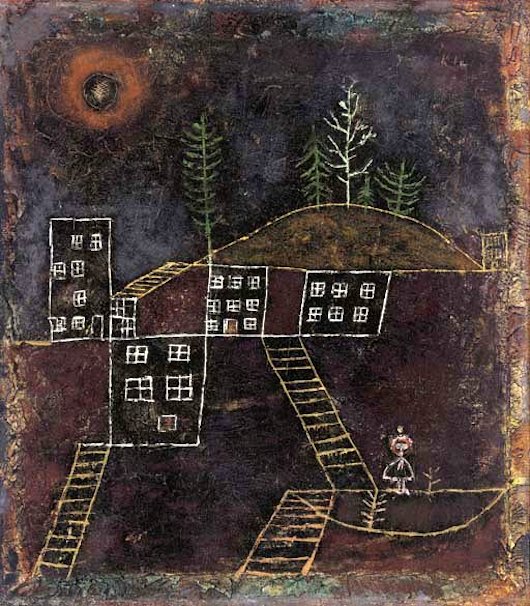 1928
1928
33. Paul Klee
He wrote, while traveling in Tunisia, “Reality and dream simultaneously, and myself makes a third in the party, completely at home here…The prospect across the water was splendidly beautiful, but not extravagant. Everything has great dignity…The evening is indescribable.…In the morning, painted outside the city; a gently diffused light falls, at once mild and clear…In the afternoon, the mosque. The sun darted through, and how!…In the evening, through the streets…An evening of colors as tender as they were clear. Color possesses me. I don’t have to pursue it. It will possess me always, I know it. That is the meaning of this happy hour: Color and I are one. I am a painter.”
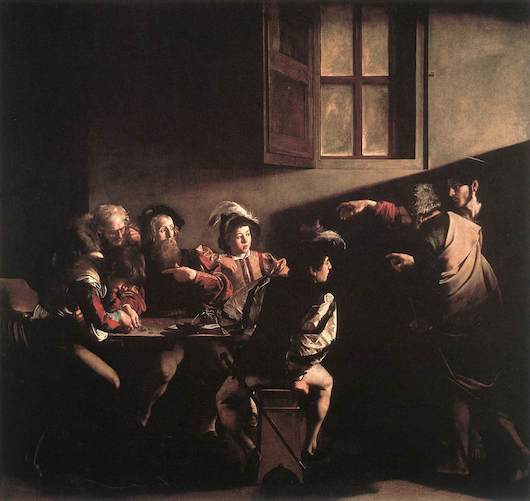 1599-1600
1599-1600
32. Caravaggio
Caravaggio biographer Andrew Graham-Dixon wrote, “Much of what is known about him has been discovered in the criminal archives of his time. The majority of his recorded acts - apart from those involved in painting - are crimes and misdemeanors.”
And, "Caravaggio had lived much of his life close to the margins of society, surrounded by poor and ordinary people. He painted them, staging the stories of the Bible with their bodies and their faces. He painted for them and from their perspective. In the end he died among them and was buried among them, in an unmarked grave. He was thirty-eight years old."
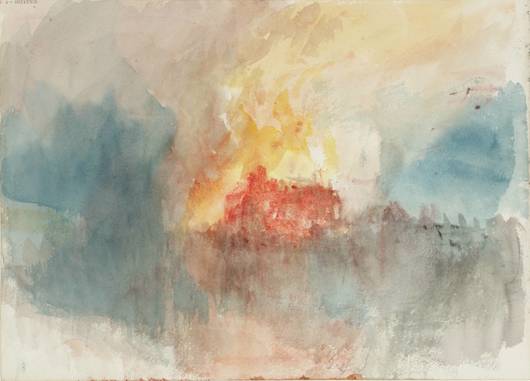 1834
1834
31. J.M.W. Turner
"If I could find anything blacker than black I’d use it."
Fairfield Porter wrote that, "Turner precedes Marin in being perhaps the first Western landscape painter unable to overlook the fact that nature is larger than his pictures."
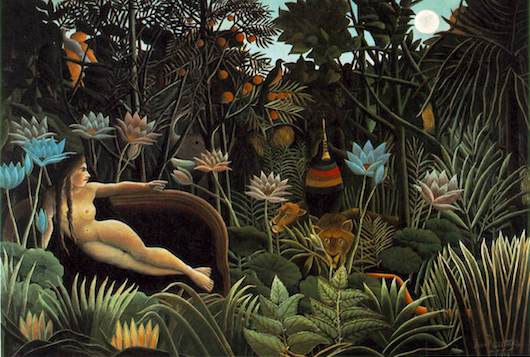 The Dream, 1910
The Dream, 1910
30. Henri Rousseau
Gentle Rousseau, you hear us
Delaunay his wife Monsieur Quával and I
Let our baggage pass free through heaven’s gate
We’ll bring you brushes, paints and canvases
So that you can devote your sacred leisures
In the Real light to painting, as you did my portrait,
Painting the Face of the stars.
- Guillaume Apollinaire, 1912
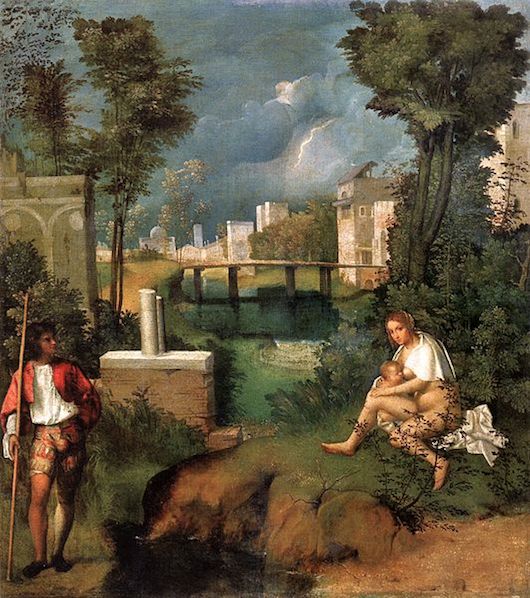 c. 1507-8. The Tempest
c. 1507-8. The Tempest
29. Giorgione (born Giorgio Barbarelli da Castelfranco)
Walter Pater wrote in 1877, "Giorgione thus becomes a sort of impersonation of Venice itself, its projected reflex or ideal, all that was intense or desirable in it crystallising about the memory of this wonderful young man."
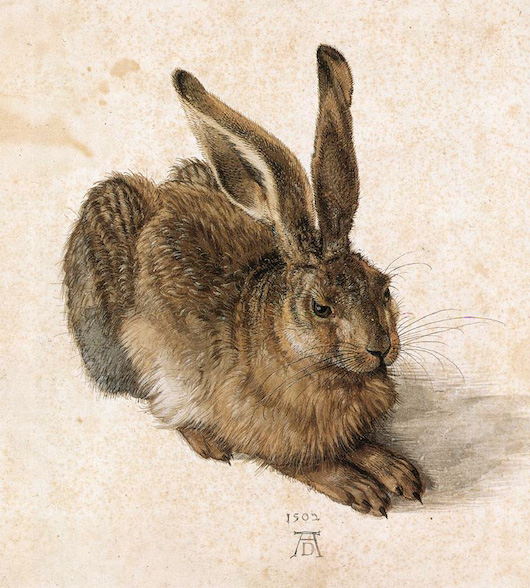 1502
1502
28. Albrecht Dürer
He wrote, "The new art must be based upon science - in particular, upon mathematics, as the most exact, logical, and graphically constructive of the sciences."
And, in a letter from Venice in 1506, he wrote, “Here I am a gentleman. At home I am a bum.”
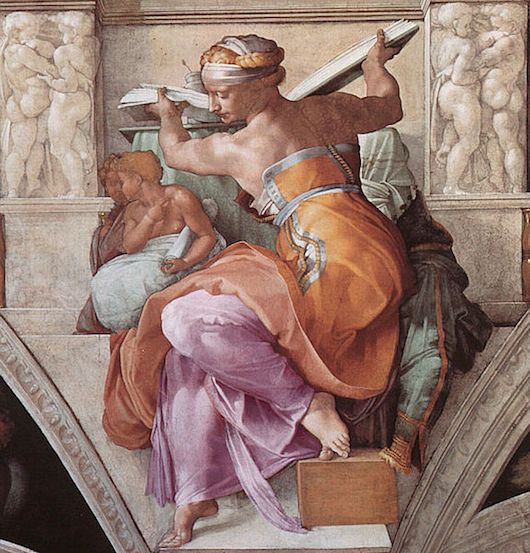 1508-12
1508-12
27. Michelangelo (Michelangelo di Lodovico Buonarroti Simoni)
As quoted in Francisco de Hollanda's Dialogues on Painting, Michelangelo expresses his own values in opposition to those of Northern painting: "In Flanders they paint with a view to external exactness or such things as may cheer you and of which you cannot speak ill, as for example saints and prophets. They paint stuffs and masonry, the green grass of the fields, the shadow of trees, and rivers and bridges, which they call landscapes, with many figures on this side and many figures on that. And all this, though it pleases some persons, is done without reason or art, without symmetry or proportion, without skilful choice of boldness and, finally, without substance or vigour. Nevertheless, there are countries where they paint worse than in Flanders. And I do not speak so ill of Flemish painting because it is all bad but because it attempts to do so many things well (each one of which would suffice for greatness) that it does none well."
 1435-38
1435-38
26. Rogier van der Weyden
Erwin Panofsky wrote, "Rogier's world is at once physically barer and spiritually richer than Jan van Eyck's. Where Jan observed things that no painter had ever observed, Rogier felt and expressed emotions and sensations -- mostly of a bitter or bittersweet nature -- that no painter had ever recaptured."
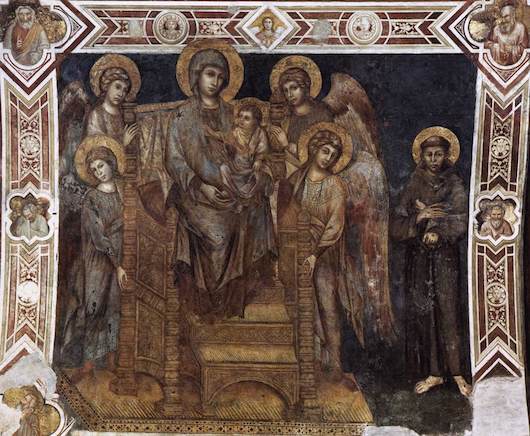 1278-80
1278-80
25. Cimabue (Cenni Di Pepi)
Vasari wrote, "So in the lower church [in Assisi] Cimabue painted in company with the Greeks, and greatly surpassed the Greek painters. Therefore, his courage rising, he began to paint by himself in fresco in the upper church, and painted many things, especially the ascent of the Virgin into heaven, and the Holy Spirit descending upon the apostles. This work, being truly very great and rich and well executed, must in my judgment have astonished the world in those days, painting having been so long in such darkness, and to myself, who saw it in the year 1563, it appeared most beautiful, and I marvelled how Cimabue could have had such light in the midst of such heavy gloom."
 1950
1950
24. Willem de Kooning
"Content is a glimpse of something, an encounter like a flash. It is very tiny - very tiny, content."
"It is disastrous to name ourselves."
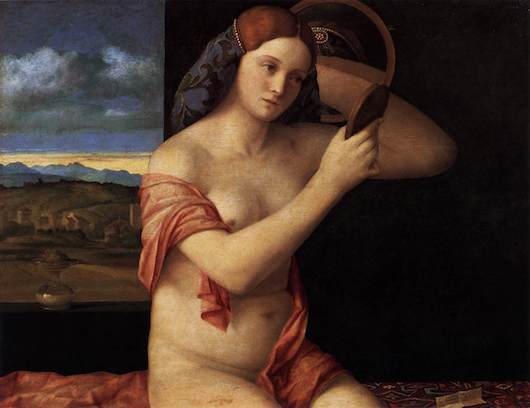 1515
1515
23. Giovanni Bellini
Mantegna's brother-in-law and Titian's teacher. In a letter from Venice in 1506, Dürer wrote of Bellini: "He is very old and yet he is the best painter of all."
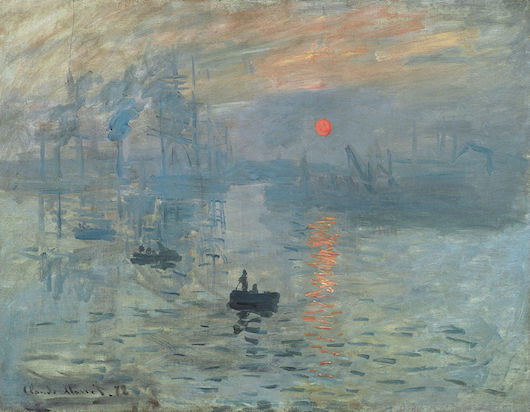 1872
1872
22. Claude Monet
Théodore Duret remembered Manet saying, at the Salon of 1865, "Who is this Monet? He appears to have appropriated my name with a view to benefiting by all the stir that is being made about me."
"Without Monet we would all have given up," said Renoir.
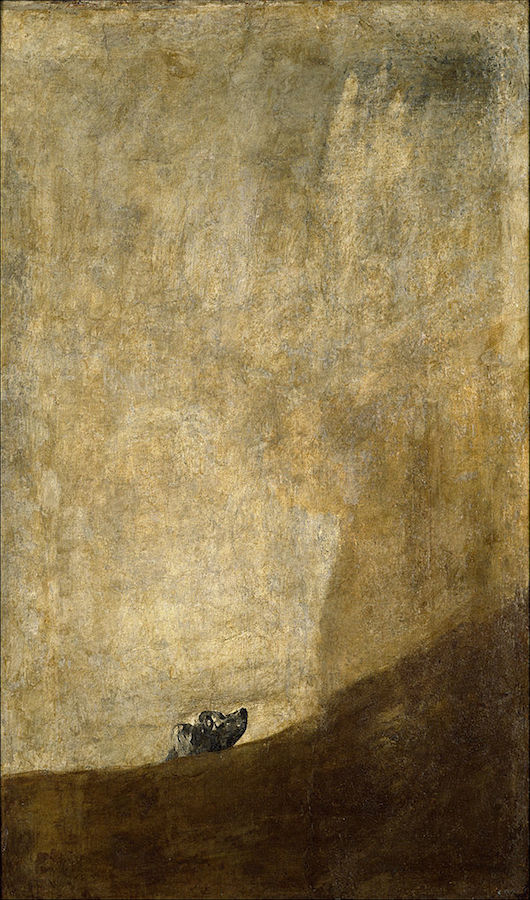 1819-23
1819-23
21. Francisco de Goya (Francisco José de Goya y Lucientes)
The epigraph for caprichio number 43 in Goya's Los Caprichos reads, "Fantasy abandoned by reason produces impossible monsters: united with her, she is the mother of the arts and the origin of their marvels."
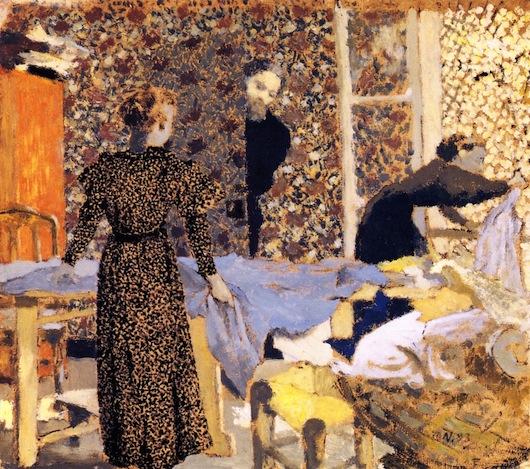 1893
1893
20. Édouard Vuillard
Fairfield Porter wrote, "Vuillard's significance is double; first, he did what Cézanne wanted to do, made of Impressionism something solid and enduring like the art of the museums, by unifying the Impressionist shimmer into a single object, instead of like Cézanne denying the essence of the shimmer by changing it into planes to express solidity. Secondly, Vuillard was the artist who most profoundly expressed in visual terms the Third Republic. We have not yet caught up with the extreme sophistication of his successes. He is thought of as soft and private. Privacy is also the essence of bourgeois life in France. And there is his sense of humor: on the side of illustration, the Frenchman who reads his newspaper in an environment whose beauty only the artist is paying attention to; on the other side (and related to the problem of identity), a humility or sense of proportion. As his paintings became less 'intimate' he gained in his remarkable ability to put together everything before him...Only Vuillard could make a masterpiece that in all superficial ways resembles a magazine illustration, in all ways except in everything."
 1907
1907
19. Pablo Picasso
"Every act of creation is first an act of destruction."
"There is no abstract art. You must always start with something. Afterward you can remove all traces of reality. There's no danger then, anyway, because the idea of the object will have left an indelible mark. It is what started the artist off, excited his ideas, and stirred up his emotions. Ideas and emotions will in the end be prisoners in his work."
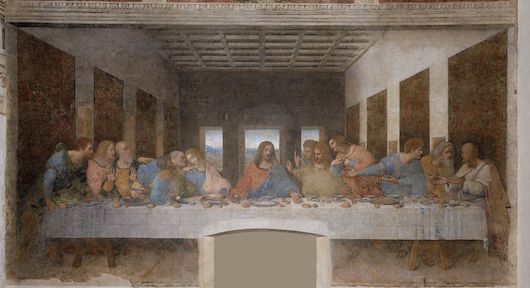 1494-98
1494-98
18. Leonardo da Vinci
"Look at the light and consider its beauty. Blink your eye and look at it again: what you see was not there at first, and what was there is no more. Who is it who makes it anew if the maker dies continually?...Light is the chaser away of darkness. Shade is the obstruction of light."
"The way to represent Night: That which is entirely bereft of light is all darkness; since such is the condition of night, if you wish to represent a scene herein, arrange to introduce a great fire."
1932
17. Pierre Bonnard
"I haven’t lived with that long enough to paint it."
"Vision is mobile...I'm trying to do what I have never done, give the impression one has on entering a room: one sees everything and at the same time nothing."
Fairfield Porter wrote, "He was an individualist without revolt, and his form, which is more complete and thorough than any abstract painter's, comes from his tenderness."
 1863
1863
16. Édouard Manet
Things said about Manet:
Salon juror: "Every year there is a Manet problem, just as there is an Orient problem or an Alsace-Lorraine problem."
Degas: "One cannot stay vexed with Manet for very long."
Delacroix: "I regret having been unable to defend this man."
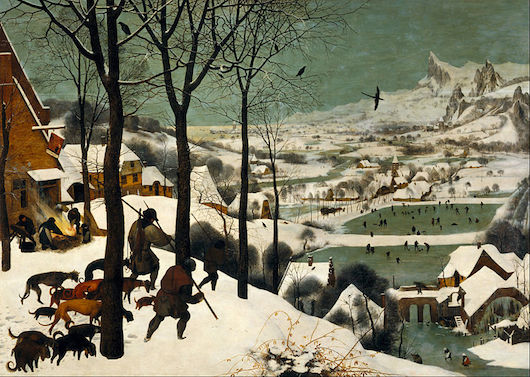 1565
1565
15. Pieter Bruegel the Elder
"That some of his invention," Hilton Kramer wrote, "is openly appropriated from the work of Hieronymus Bosch would, of course, have been recognized by Bruegel’s contemporaries. Far from being a liability, however, this debt to Bosch seems to have enhanced Bruegel’s appeal, and so, I believe, it does for us as well. The premium that the modern mind places on the idea of artistic originality doesn’t really apply here, but even if it did, Bruegel could scarcely be mistaken for an abject imitator of anyone."
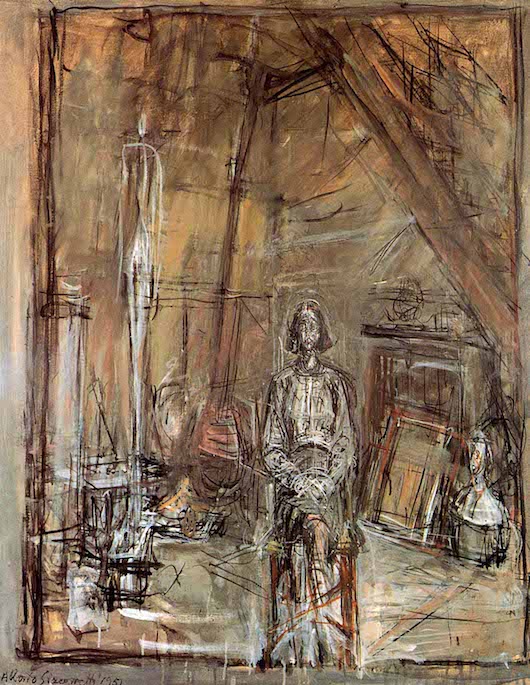 1951
1951
14. Alberto Giacometti
"I don’t know if I work in order to do something or in order to know why I can’t do what I want to do."
"Impossible to grasp the entire figure…if one began on a detail, a heel, the nose, there was no hope of ever achieving the whole. One could have spent a lifetime without achieving a result. The form dissolved, it was little more than granules moving over a deep black void, the distance between one wing of the nose and the other is like the Sahara, without end, nothing to fix one’s gaze upon, everything escapes."
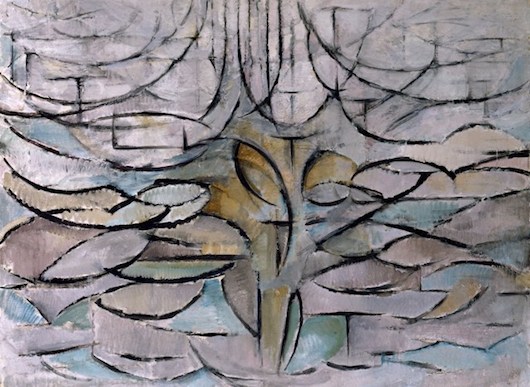 1912
1912
13. Piet Mondrian
He wrote, in 1917, "The new plastic idea cannot, therefore, take the form of concrete representation, although the latter does always indicate the universal to a degree, or at least conceal it within. This new plastic idea will ignore the particulars of appearance, that is to say, natural form and colour. On the contrary it should find its expression in the abstraction of form and colour, that is to say, in the straight line and the clearly defined primary colour."
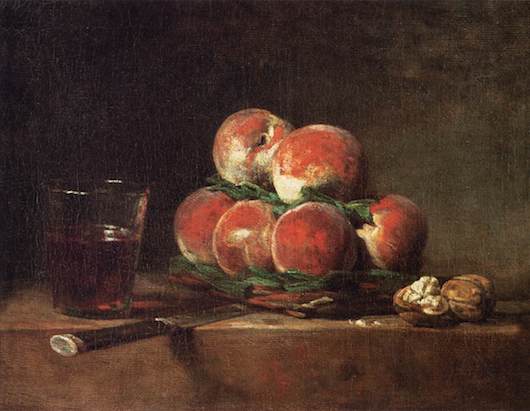 1768
1768
12. Jean-Baptiste-Siméon Chardin
One day an artist was going on at length about all he did to purify and perfect his colors. Chardin, annoyed at hearing such talk from a man whom he knew to be no more than a cold and careful technician, said to him, 'but who told you that painting was done with color?" “What is it done with, then?" the other artist asked in surprise. "Colors are employed," said Chardin, "but painting is done with emotions."
Chardin: “In order to concentrate on reproducing faithfully I must forget everything I have seen, and even forget the way such objects have been treated by others. I must place it at such a distance that I cannot see the details.”
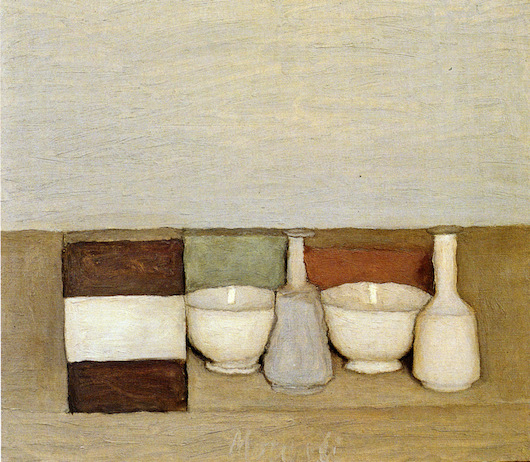 1954
1954
11. Giorgio Morandi
"I believe that nothing can be more abstract, more unreal, than what we actually see. We know that all that we can see of the objective world, as human beings, never really exists as we see and understand it. Matter exists, of course, but has no intrinsic meaning of its own, such as the meanings that we attach to it. Only we can know that a cup is a cup, that a tree is a tree."
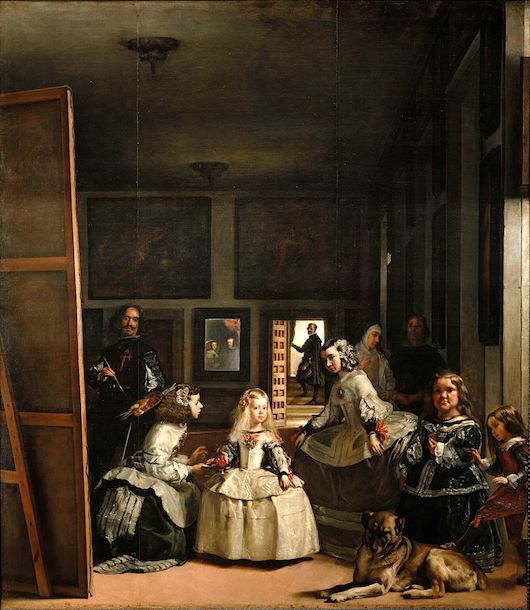 1656
1656
10. Diego Velázquez
In 1865, after a trip to Madrid, Manet told Baudelaire that Vélázquez "is the greatest painter there ever was."
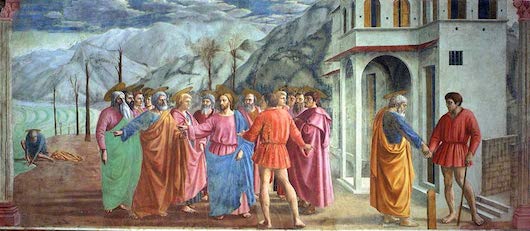 1420s
1420s
9. Masaccio (born Tommaso di Ser Giovanni di Simone)
"[Masaccio] gave a beginning to beautiful attitudes, movements, liveliness, and vivacity, rendering relief in a way that was characteristic and natural and that no painter had ever before attempted, wrote Vasari."
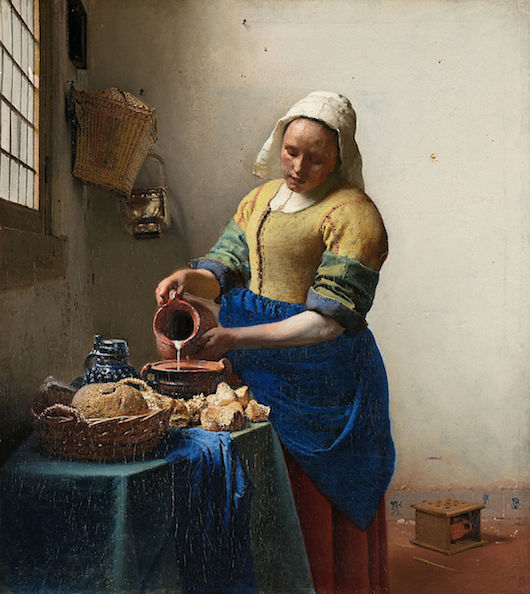 1660
1660
8. Johannes Vermeer
Bill Berkson wrote, "Vermeer’s painting of a maidservant pouring milk...is a work of extraordinary fullness in every respect. This feeling of uncanny amplitude is partly the result of the way Vermeer made his own sunlight coursing through a window (a 'cool graced light,' in Frank’s O’Hara's phrase, if ever there was one) act on bits of earthly surface, affording a kind of extreme visibility to each thing exposed in its path."
Walter Liedtke wrote, "As the painter worked on a picture, the world of art was constantly tested against direct observation. Vermeer was intensely preoccupied with the behavior of light and other optical effects such as sudden recessions and changes of focus. These qualities in Vermeer's work may have been inspired by an interest in the camera obscura (which projects actual images), but its importance to the artist has been greatly exaggerated. His compositions are mostly invented and exhibit the most discriminating formal relationships, including those of color."
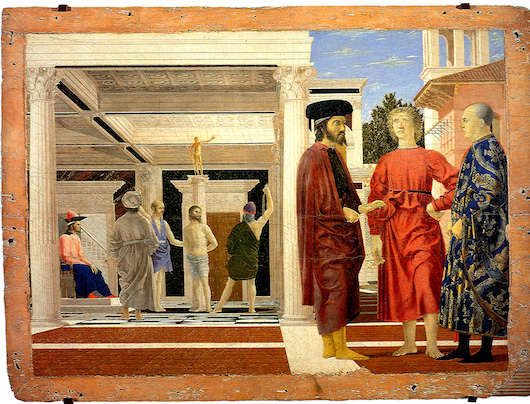
1455-1460
7. Piero della Francesca
In a short essay published in Art News in 1965, Philip Guston wrote, "In The Flagellation, his thought is diffuse. Everything is fully exposed. The play has been set in motion. The architectural box is opened by the large block of the discoursers to the right, as if a door were slid aside to reveal its contents: the flagellation of Christ, the only 'disturbance' in the painting, but placed in the rear, as if in memory. The picture is sliced almost in half, yet both parts act on each other, repel and attract, absorb and enlarge, one another. At times, there seems to be no structure at all. No direction. We can move spatially everywhere, as in life.
Possibly it is not a 'picture' we see, but the presence of a necessary and generous law.
Is the painting a vast precaution to avoid total immobility, a wisdom which can include the partial doubt of the final destiny of its forms? It may be this doubt which moves and locates everything."
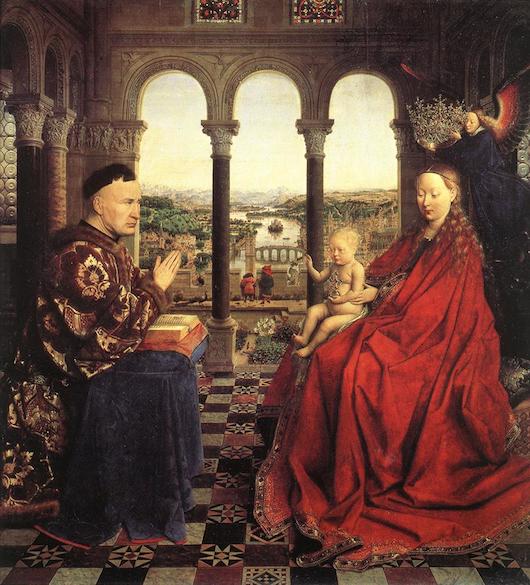 1435
1435
6. Jan van Eyck
Susan Jones wrote, "Through his understanding of the effects of light and rigorous scrutiny of detail, van Eyck is able to construct a convincingly unified and logical pictorial world, suffusing the absolute stillness of the scene with scintillating energy. Despite this legendary objectivity, van Eyck's paintings are perhaps most remarkable for their pure fictions."
Erwin Panofsky wrote, "In [the works of Jan van Eyck] medieval symbolism and modern realism are so perfectly reconciled that the former has become inherent in the latter. The symbolical significance is neither abolished nor does it contradict the naturalistic tendencies; it is so completely absorbed by reality that reality itself gives rise to a flow of preternatural associations, the direction of which is secretly determined by the vital forces of medieval iconography."
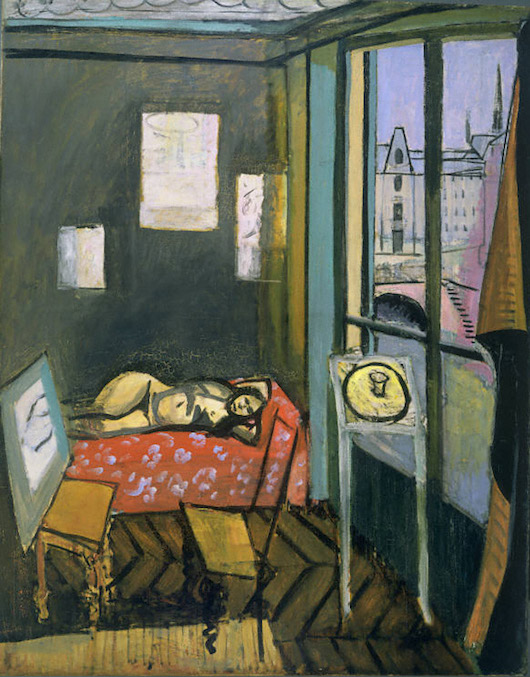 1916
1916
5. Henri Matisse
"Underlying the succession of moments which constitutes the superficial existence of beings and things, and which is continually modifying and transforming them, one can search for a truer, more essential character, which the artist will seize so that he may give to reality a more lasting interpretation," he wrote.
And, "An artist must never be a prisoner of himself, prisoner of a style, prisoner of a reputation, prisoner of a success...Didn't the Goncourt brothers write that Japanese artists of the great period changed their names several times during their lives? I like that: they wanted to protect their freedoms."
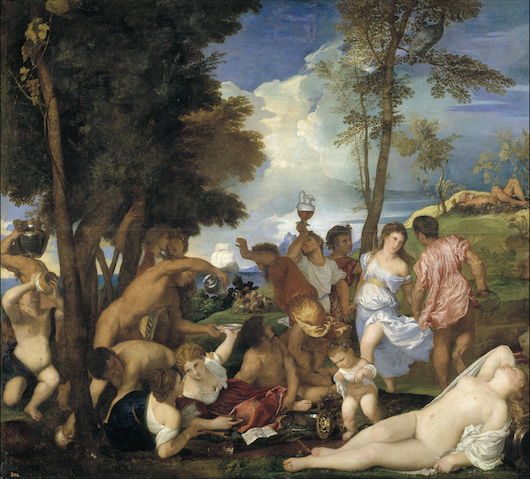 1523-26
1523-26
4. Titian (Tiziano Vecellio)
Michelangelo on Titian (as reported by Vasari): "I like the man’s style and his coloring, but it is a great pity that in Venice they don’t learn to draw well."
Gian Paolo Lomazzo wrote, "Titian was the sun amid small stars not only among the Italians but all the painters of the world."
 1667
1667
3. Rembrandt van Rijn
"Try to put well in practice what you already know; and in so doing, you will in good time, discover the hidden things you now inquire about. Practice what you know, and it will help to make clear what now you do not know."
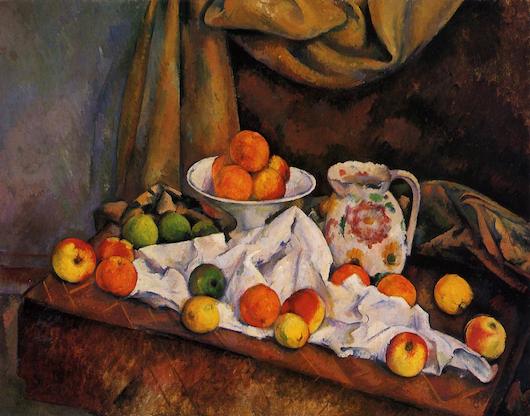 1892-94
1892-94
2. Paul Cézanne
"Art has a harmony which parallels that of nature. The people who tell you that the artist is always inferior to nature are idiots! He is parallel to it. Unless, of course, he deliberately intervenes. His whole aim must be silence. He must silence all the voices of prejudice within him, he must forget. And then the entire landscape will engrave itself on the sensitive plate of his being."
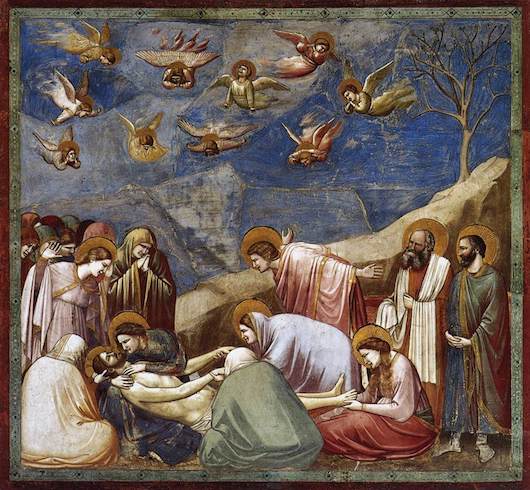 1300-1305
1300-1305
1. Giotto di Bondone
"In my opinion," wrote Vasari, "painters owe to Giotto, the Florentine painter, exactly the same debt they owe to nature, which constantly serves them as a model and whose finest and most beautiful aspects they are always striving to imitate and reproduce."
Vasari alleged that, "One day Cimabue was on his way from Florence to Vespignano, where he had some business to attend to, when he came across Giotto who, while the sheep were grazing near by, was drawing one of them by scratching with a slightly pointed stone on a smooth clean piece of rock. And this was before he had received any instruction except for what he saw in nature itself. Cimabue stopped in astonishment to watch him, and then he asked the boy whether he would like to come and live with him."
 Ad Reinhardt's "Tree of Modern Art", June 2nd, 1946
Ad Reinhardt's "Tree of Modern Art", June 2nd, 1946
"In the Dark You Can Love This Place" - Barzin (mp3)
"You Were Made For All Of This" - Barzin (mp3)
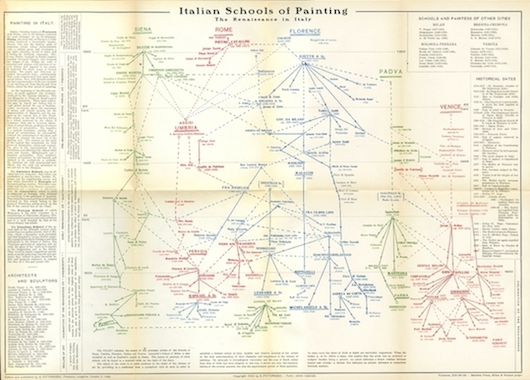 Uffizi Gallery's 1930 diagram, "Italian Schools of Painting"
Uffizi Gallery's 1930 diagram, "Italian Schools of Painting"






























